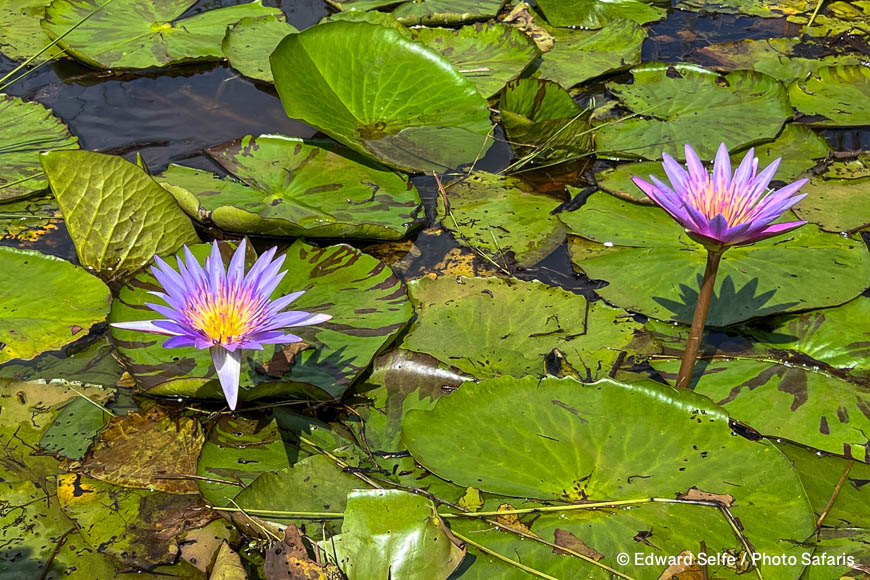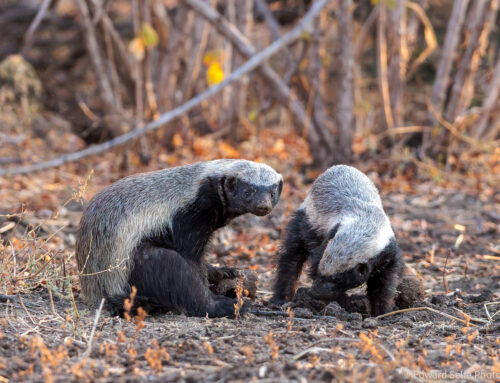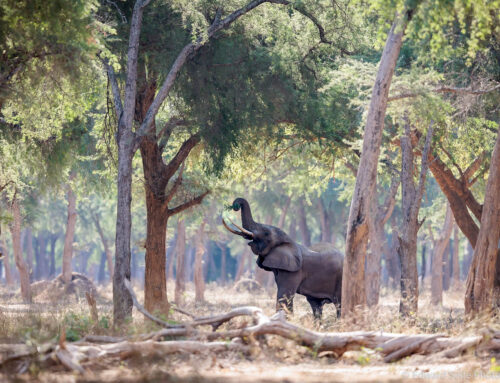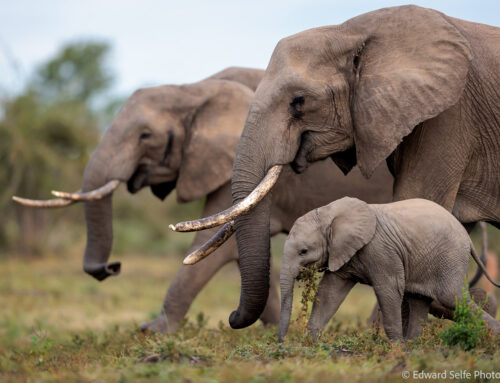I have just returned from a tour around the beautiful and welcoming country of Uganda; in a 10 day trip, we visited an incredibly diverse and spectacular range of habitats and experienced wonderful wildlife and scenery throughout. I am running a photo-safari to Uganda & Kenya next year which will follow roughly this Uganda itinerary (and then a week with Laikipia Wilderness in central Kenya) and the tour has space for one guest in single occupancy. I hope the following trip report will encourage someone that this is an unmissable destination for wildlife and photography!
We travelled the country mostly by road, visiting Entebbe, Kibale Forest NP, the Crater Lakes south of Kibale, Queen Elizabeth National Park and Bwindi Impenetrable NP. We ended with a visit to Mbamba swamps on the edge of Entebbe. Part of the joy of travelling by road is that we enjoy a real experience of the culture, people and function of the nation; in this, we were extremely fortunate to have the logistical support of Experience Uganda and the insights and guiding of Ugandan national Kamya Lule, both of whom were exceptional and made for a memorable trip. Thank you to Kev & Rhys from Experience Uganda and to Kamya – I look forward to next year’s trip with you.
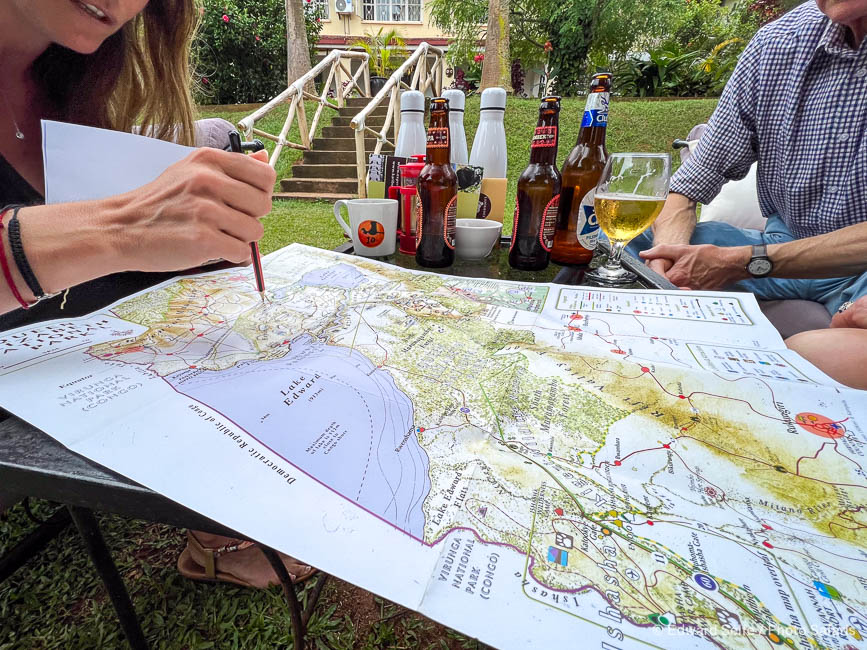
Prior to setting off, the team from Experience Uganda gave us maps & itineraries and took us through the route. We were also given reusable water bottles to save on plastic waste on route.
I am going to split the report into locations; on top of these location-based photos, there was lots of scenery and enjoyable road travel between the destinations which gave us insights into the history and economy of Uganda.
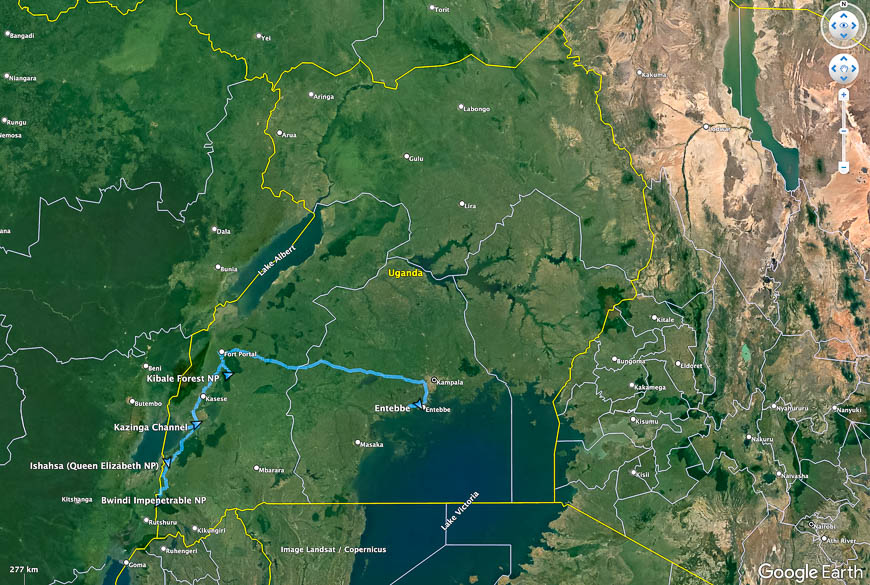
Map of Uganda showing our journey west from Entebbe to Kibale Forest NP, south through the crater lakes to the Kazinga Channel and thereafter south again to Ishasha (part of Queen Elizabeth NP) and on to Bwindi Impenetrable NP. We flew back from Kihihi (near Bwindi) to Entebbe.
Entebbe Botanical Gardens & Lake Victoria
We had half a day in Entebbe before setting off on the adventure to the western part of the country. We walked to the Entebbe Botanical Gardens, spending a couple of hours there with the birds and the colobus monkeys, and then took an evening sunset boat-cruise on Lake Victoria to move slowly along the banks and watch for otters, kingfishers and egrets.

Black-and-white Casqued Hornbill calling in Entebbe Botanical Gardens.
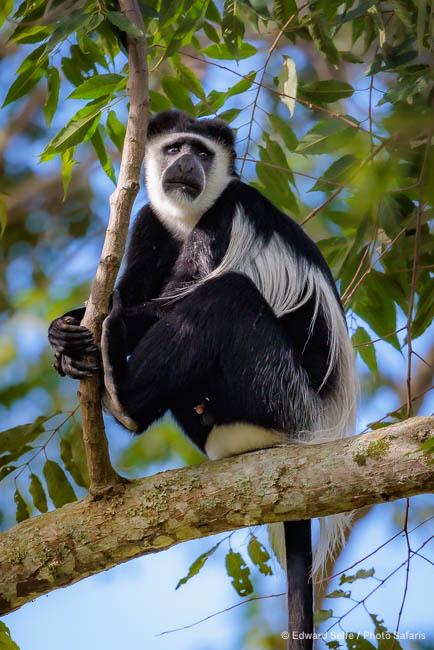
Our first encounter with black-and-white colobus monkeys.
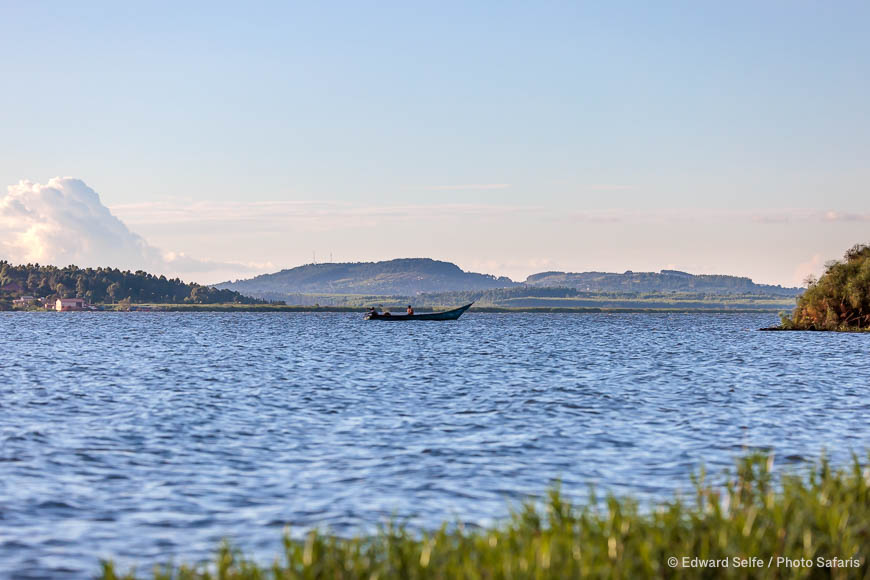
Taking the boat out on Lake Victoria.
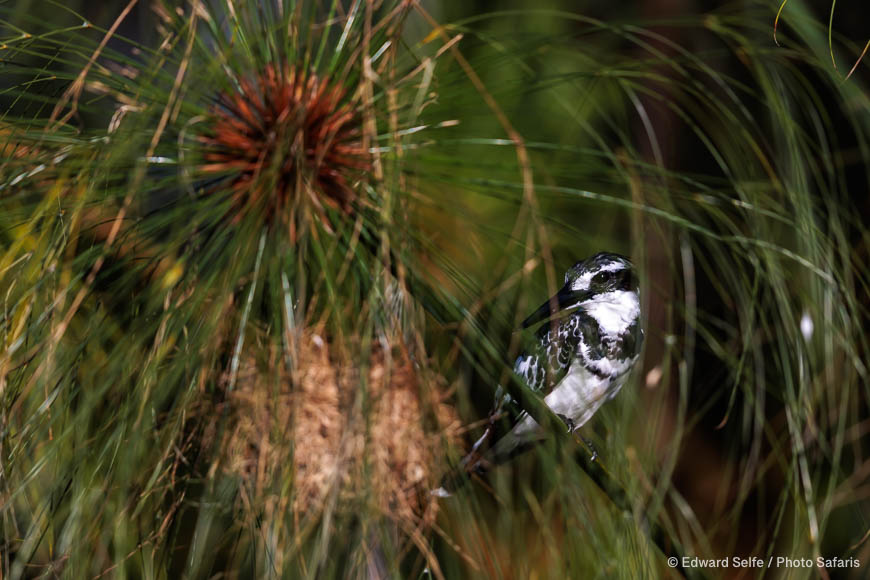
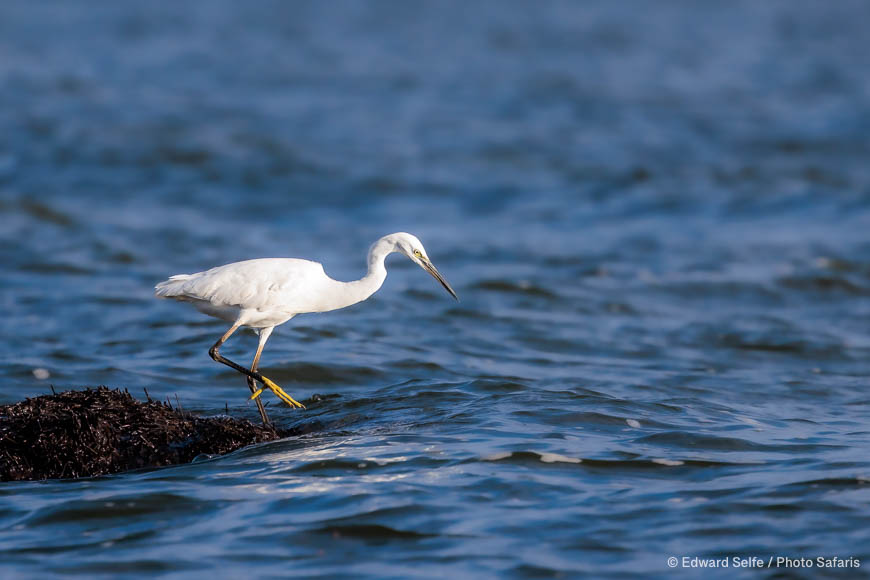
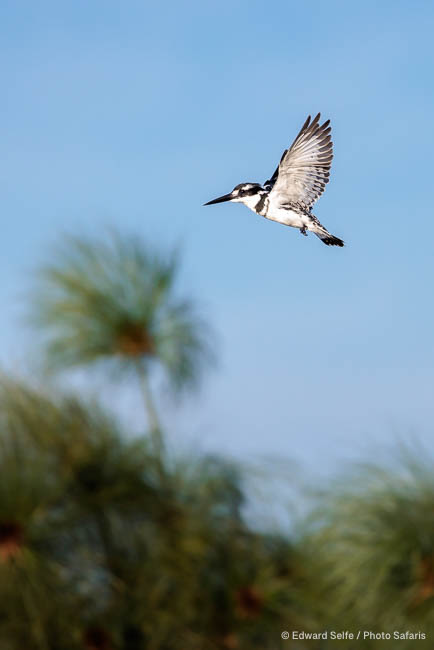
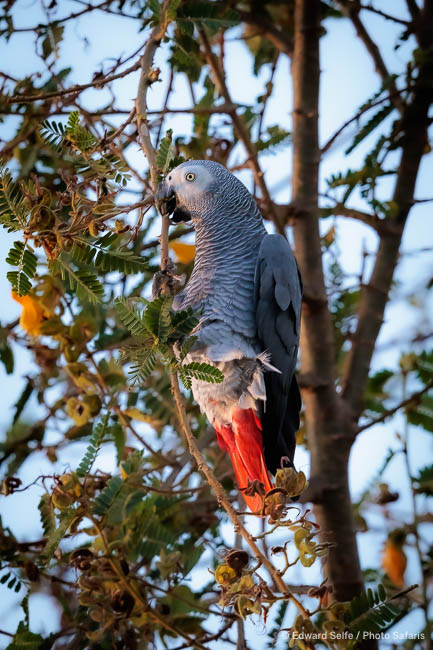
Our boatman quickly detected our photographic interests and suggested we cross the bay to look for grey parrots which he’d seen feeding on fruiting trees; such a thrill to see these in the wild, when they are so well known as domestic birds.
Arriving in Kibale Forest National Park & Turaco Tree Tops Lodge
After a 6 hour drive across the western part of the country, we arrived at Turaco Tree Tops lodge on the edge of Kibale Forest. We crossed through the forest on the way to the lodge, giving us our first sightings of monkeys, birds and the massive trees that form these equatorial rain forest areas.
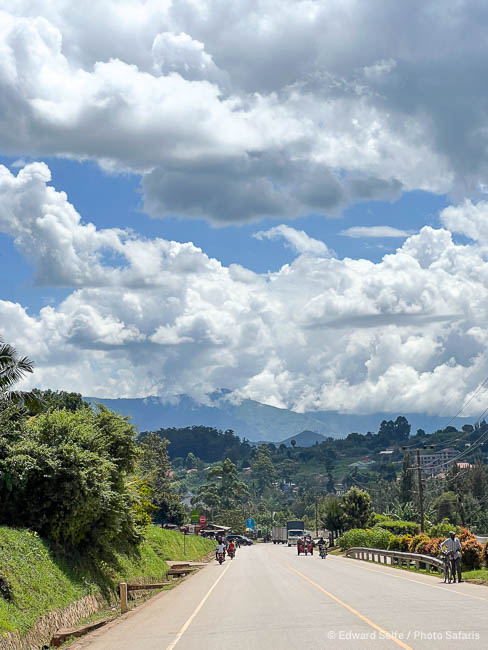
Dropping down towards Fort Portal with the first sight of the famous Rwenzori Mountains in the distance.
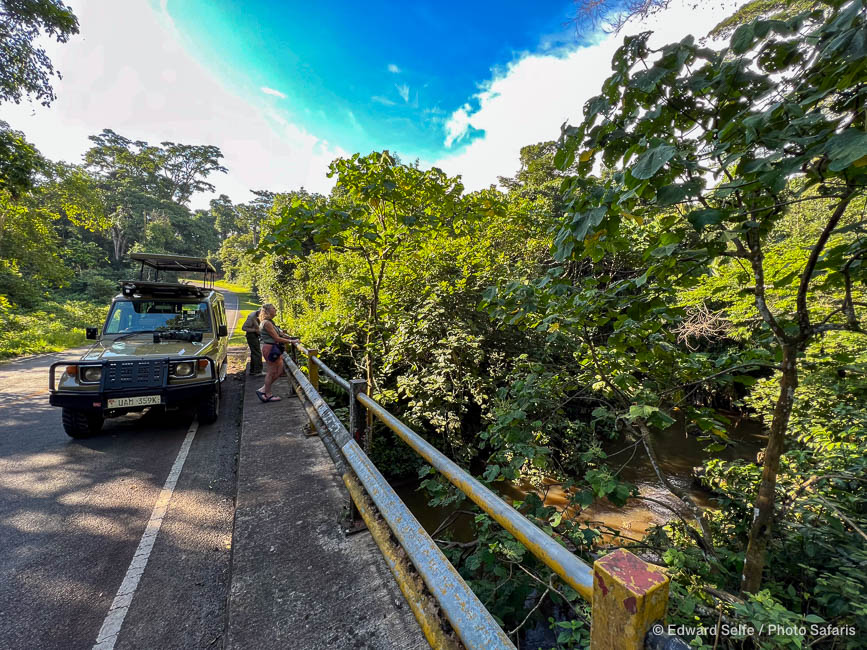
Stopping at a small stream to explore the forest on route to the lodge.
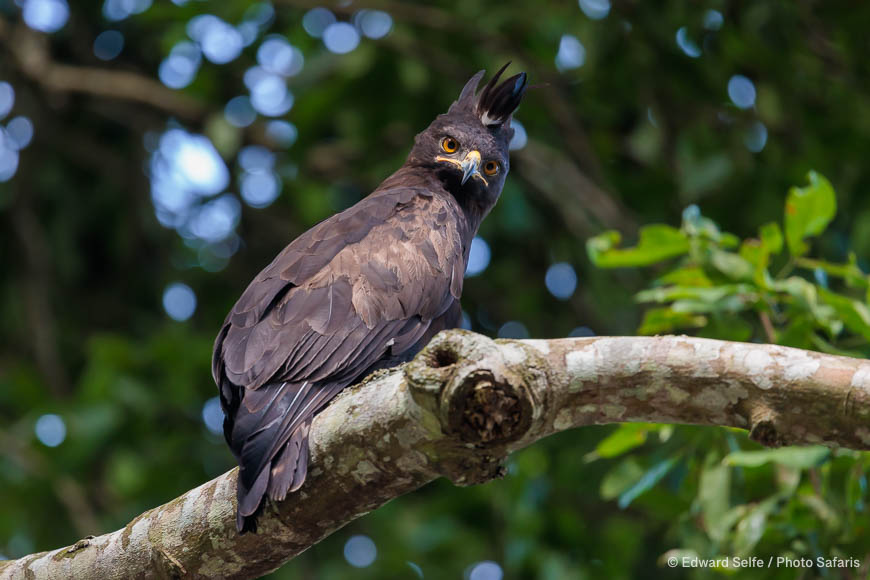
Long-crested eagle which patiently waited while we positioned ourselves for the best photos.
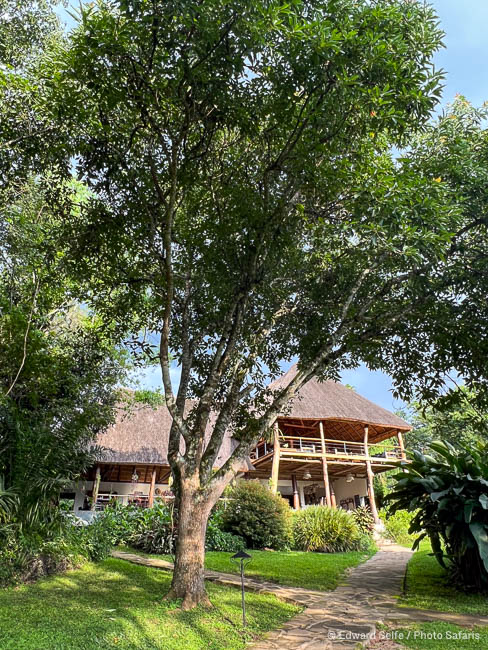
Arriving at Turaco Tree Tops lodge….
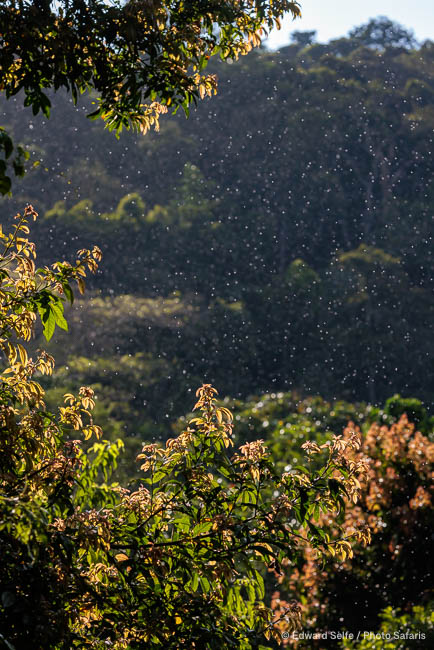
…and a short rain-shower. It didn’t last long and soon the monkeys and birds were out once more….
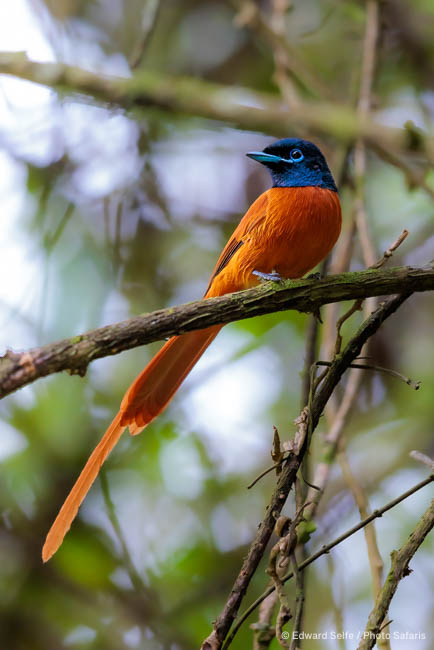
…including this Red-bellied Paradise Flycatcher.
The lodge grounds were full of beautiful trees and flowers, many of which were attracting birds of all kinds. One afternoon, we sat on the deck of the lodge and watched as at least 5 species of sun birds came to feed on the flowers just 5 meters from us….
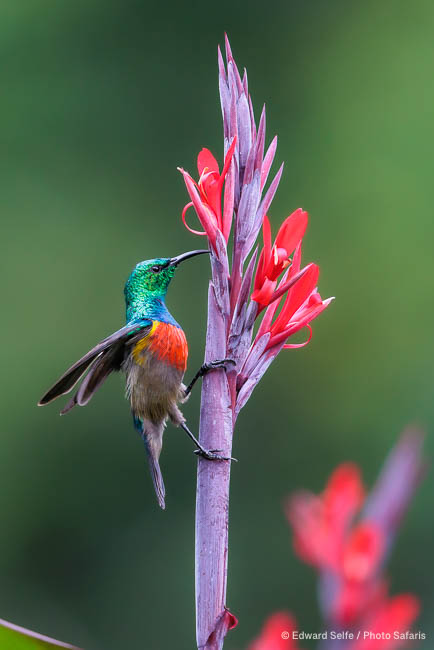
Olive-bellied Sunbirds….
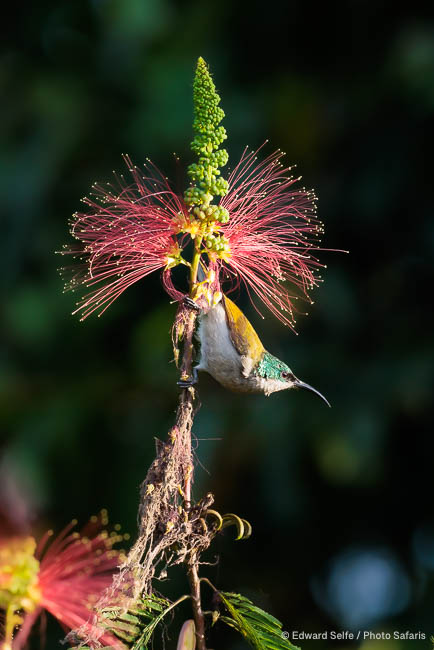
…and Green-headed Sunbirds…
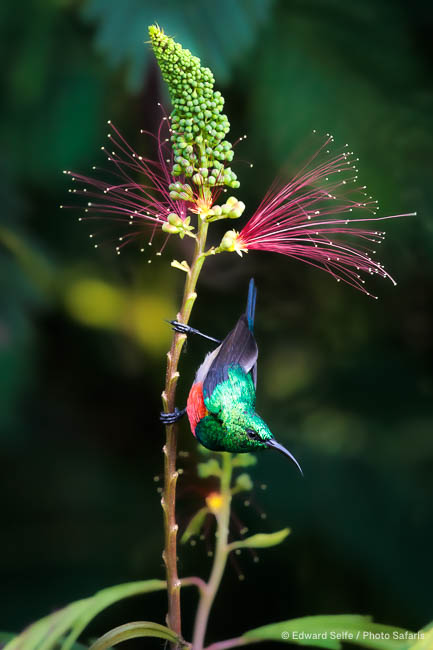
…were displaced by more Olive-bellied Sunbirds….
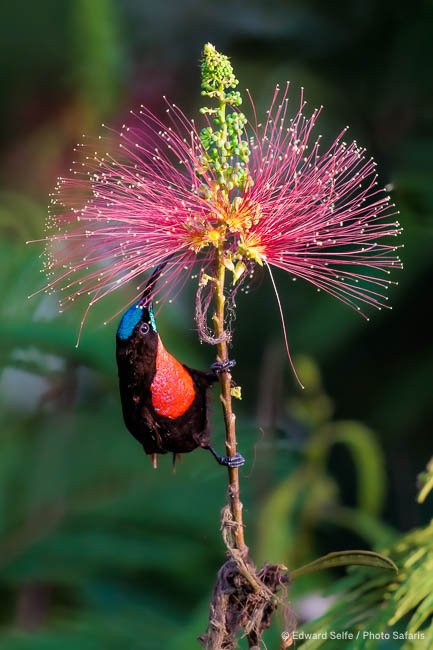
…and Scarlet-chested Sunbirds…
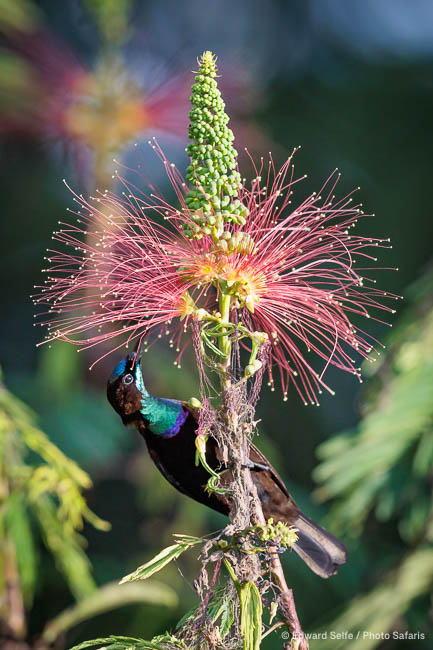
..and Green-throated Sunbirds, perhaps the most spectacular of all.
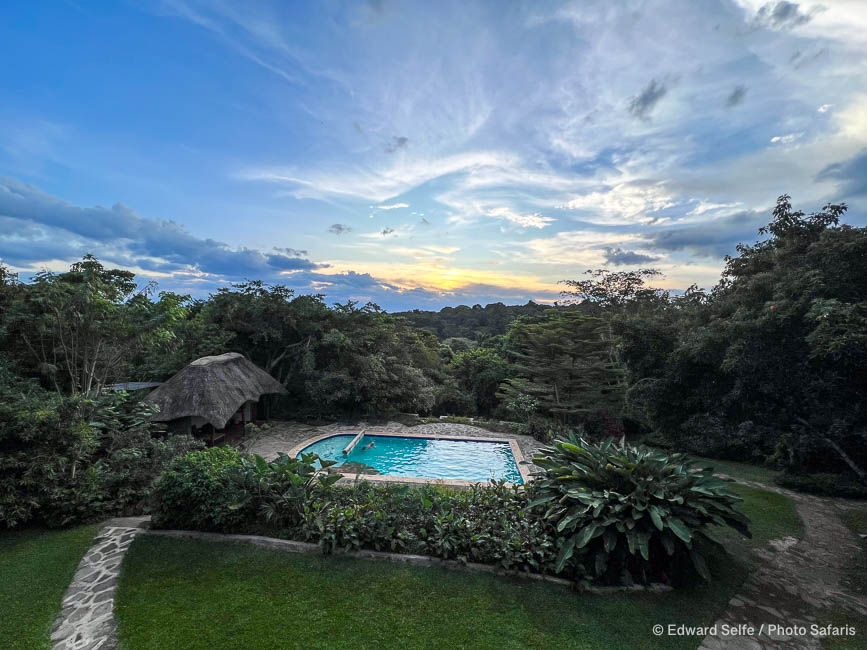
Sunset from the upper deck of the lodge building.
Bigodi Community Wetlands
Very close to Turaco Treetops is a community-owned wetlands area, with mature forest dropping down to riverine vegetation below. It is full of monkeys, birds and beautiful butterflies; we spent two mornings and one afternoon exploring this area with our guide and one local guide from the community. During that time, we saw wonderful wildlife and experienced our first rainforest downpour (don’t forget your waterproofs for both yourself and your camera!).
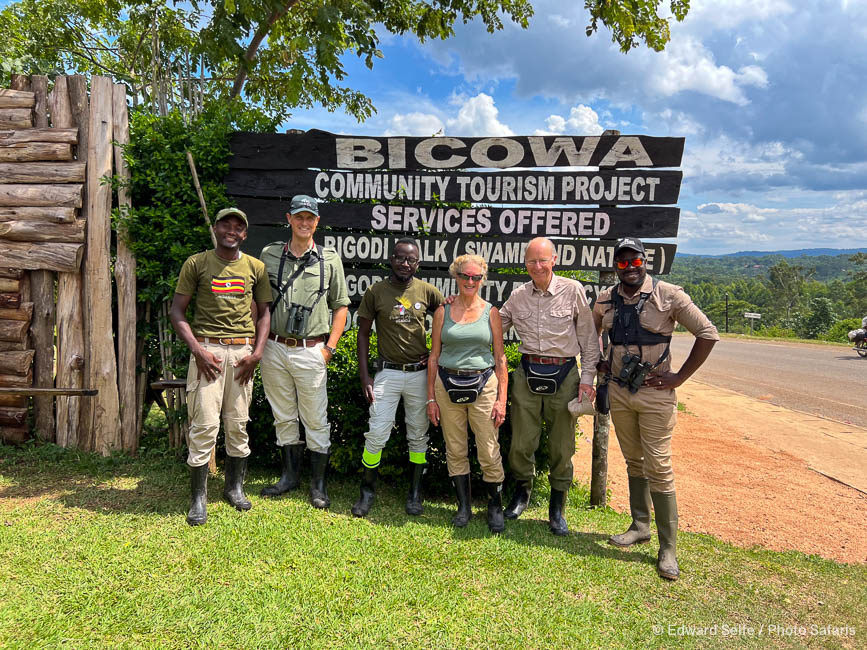
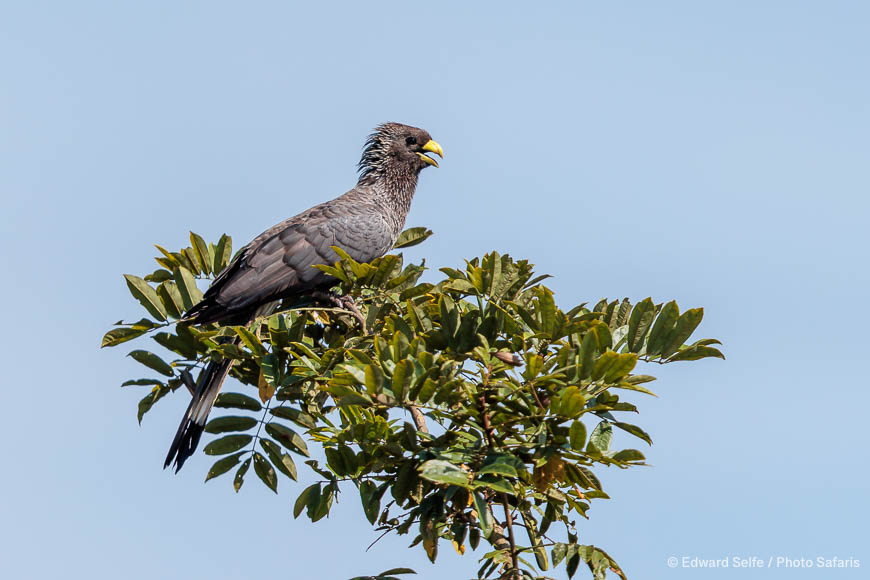
Eastern Plantain Eaters are common and easily located by their laughing calls.
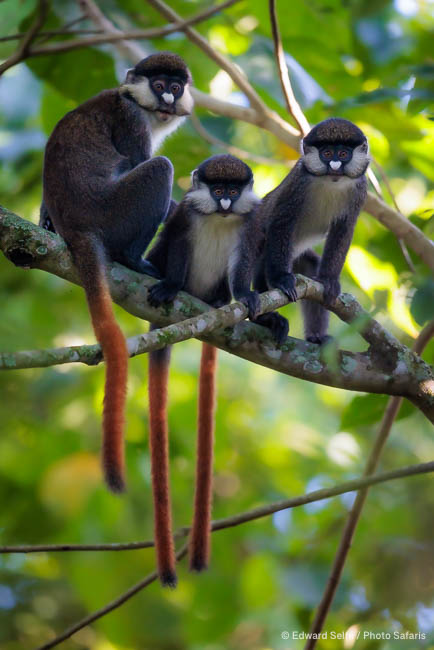
We were lucky to find our first great sighting of red-tailed/white-nosed monkeys very close to the vehicle; three youngsters were playing and grooming each other.
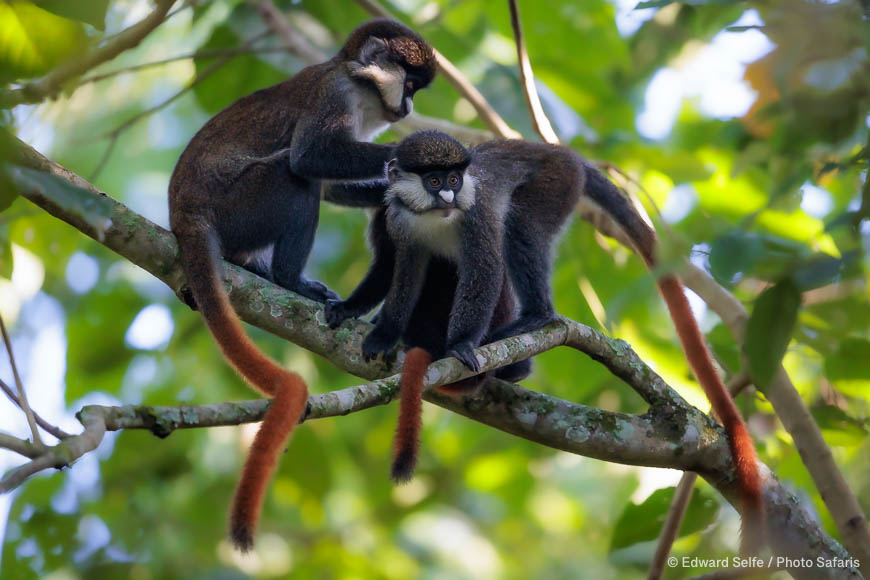
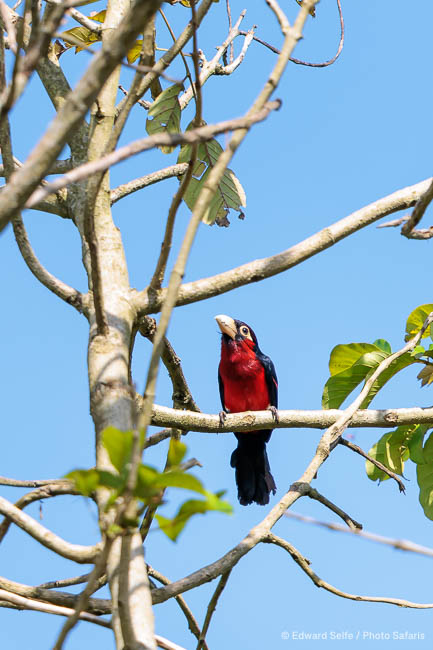
There’s a wide diversity of barbets in the equatorial regions, enjoying the bounty of fruiting trees. This Double-toothed Barbet is particularly special….
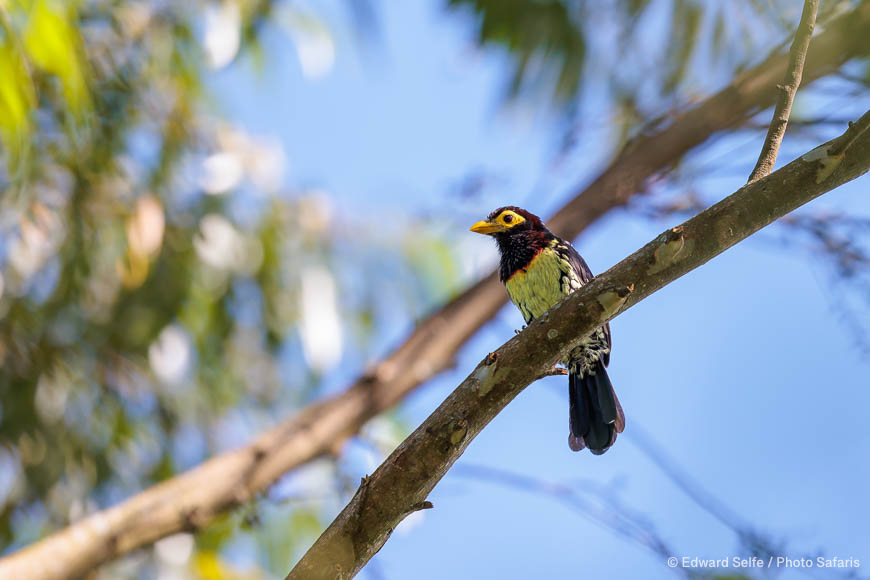
…as is this more-rarely-seen Yellow-billed Barbet.
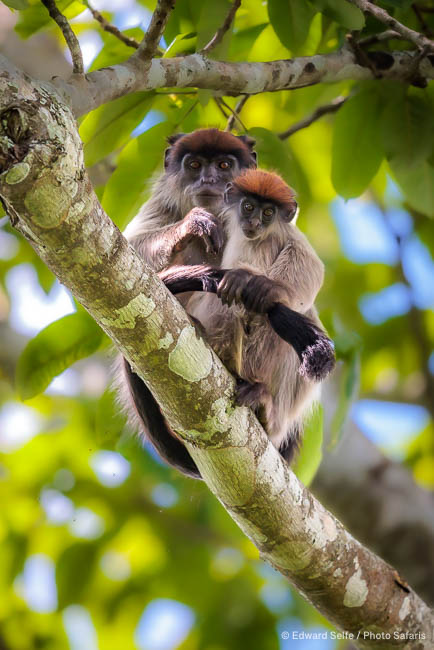
Ugandan Red Colobus monkeys tend to stay high in the trees, especially when caring for young.
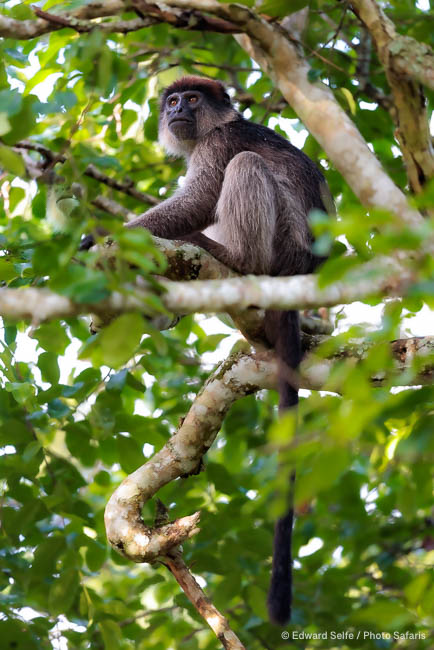
…but we occasionally had excellent views through the foliage.
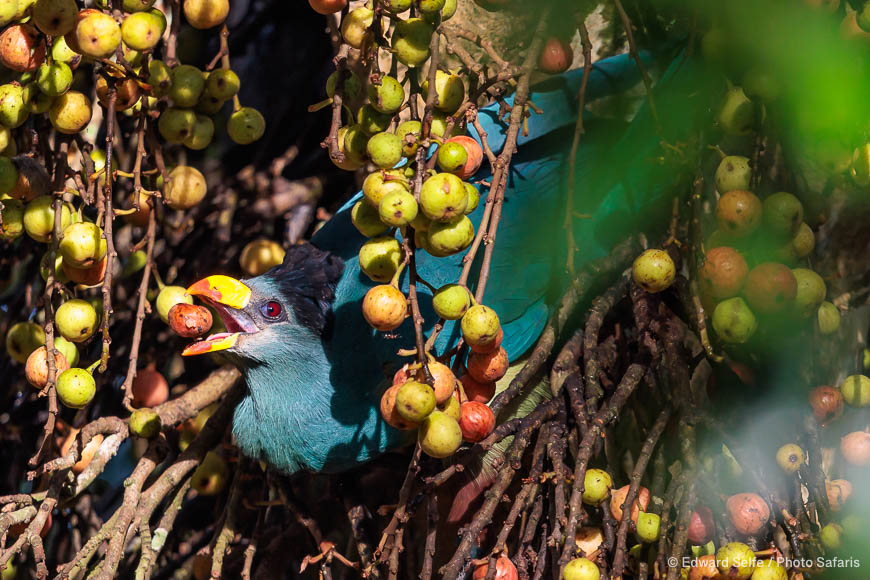
We found a fruiting fig tree which had attracted all sorts of birds and monkeys….most spectacularly these Great Blue Turacos.
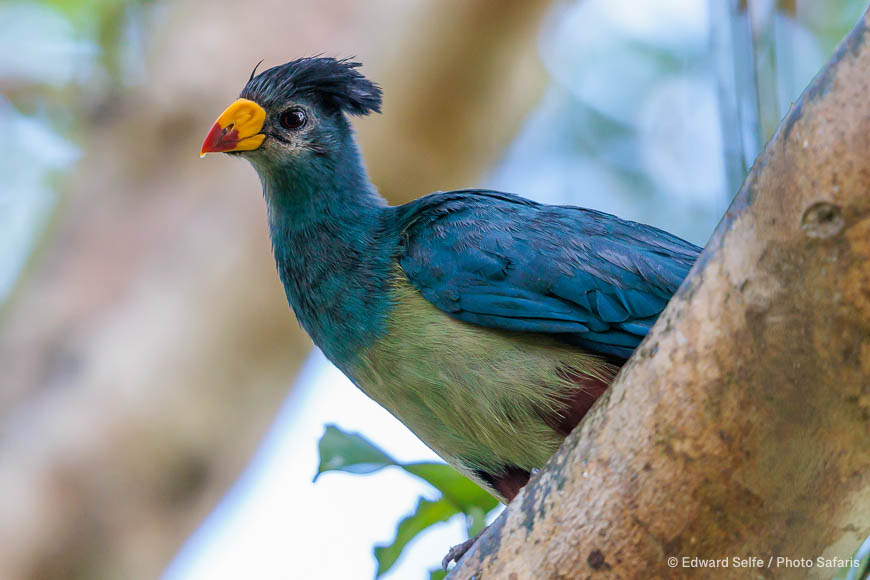
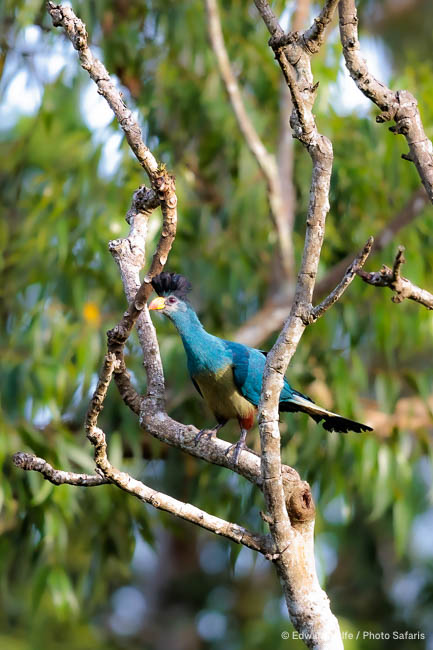
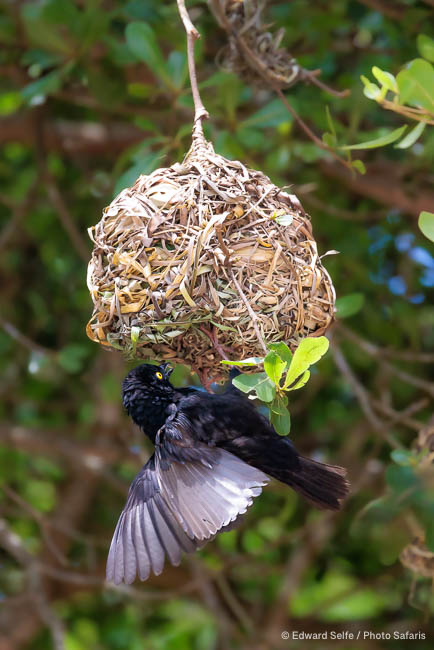
A colony of striking Vieillot’s Black Weavers kept us busy for a while…
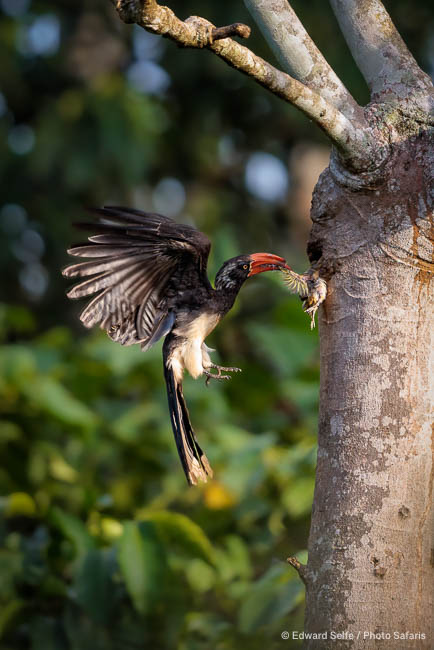
…until I noticed a Crowned Hornbill perched with a food item in his bill. The first time he flew to his nest-hole I was too slow to capture the shot, but I waited for him to return, having positioned for the best background, and was rewarded when he returned with a weaver chick; his own chicks grabbed it and pulled it rapidly inside the nest hole, without him being required to land!
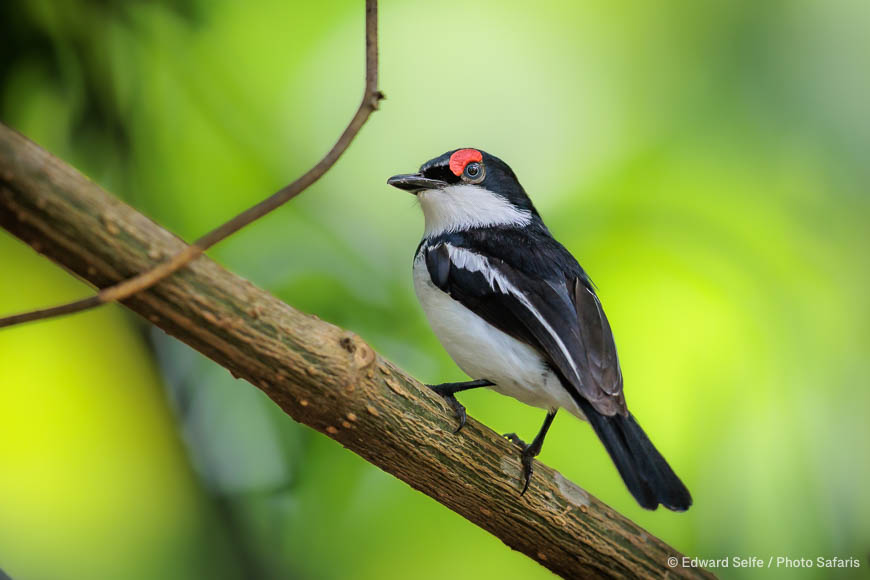
A Brown-throated Wattle-eye, a classic forest bird!
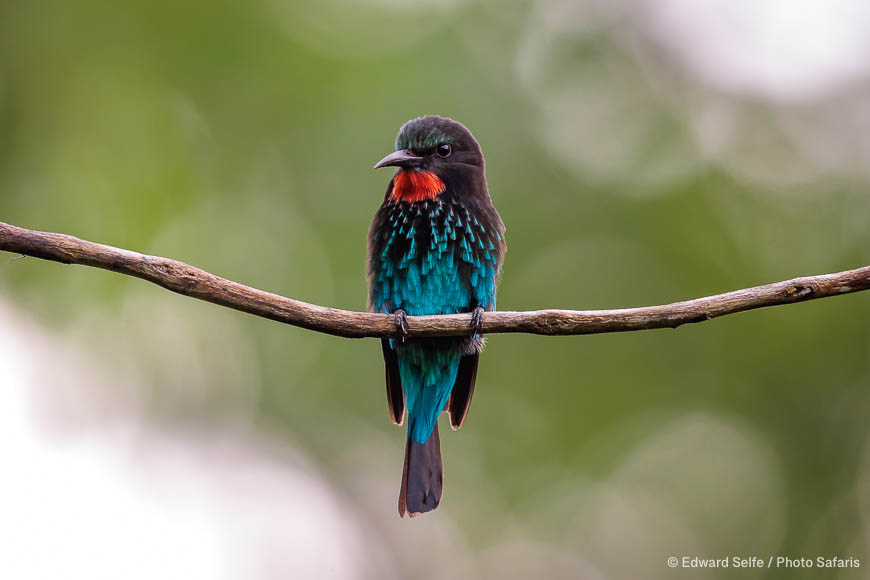
We ended our walks with the Bigodi Community guides with a visit to a reliable location for Black Bee-eaters. Black they are really not! But rather a spectacular arrangement of turquoise and red. I located their nest hole so I know where to return to find them in future.
Chimp Trekking in the Kibale Forest NP
We were fortunate to undertake two chimp treks in Kibale NP; one morning trek and one in the afternoon. It was a thrilling experience, after so much anticipation; the joy of sharing time in the forest with our closest living relatives and then the reflections afterwards will stay with me forever. I have compiled a short video of the experience and there are images below. For the tour in Jun 2024, we will undertake an afternoon trek and then a chimp habituation experience which gives us longer with the chimps (4 hours) and enables us to watch their behaviour for longer, and also to enjoy more photo opportunities.
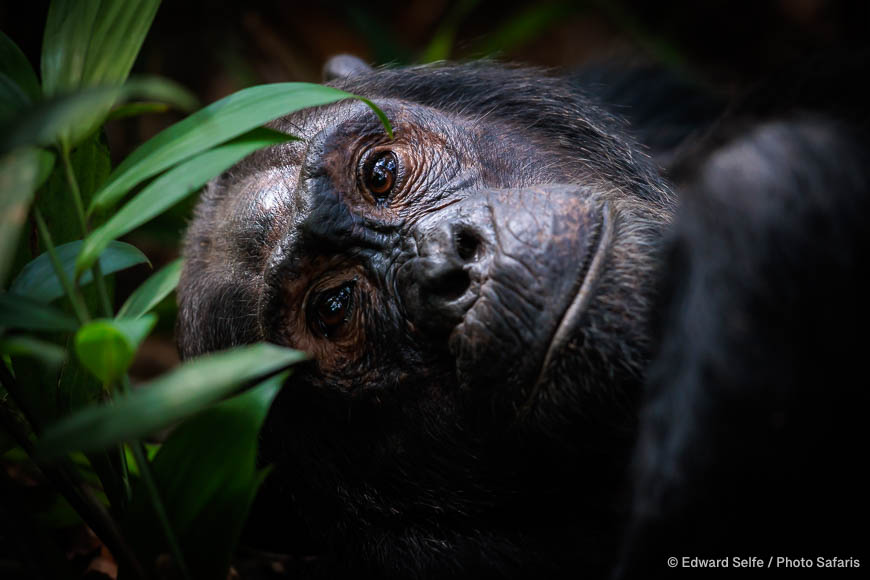
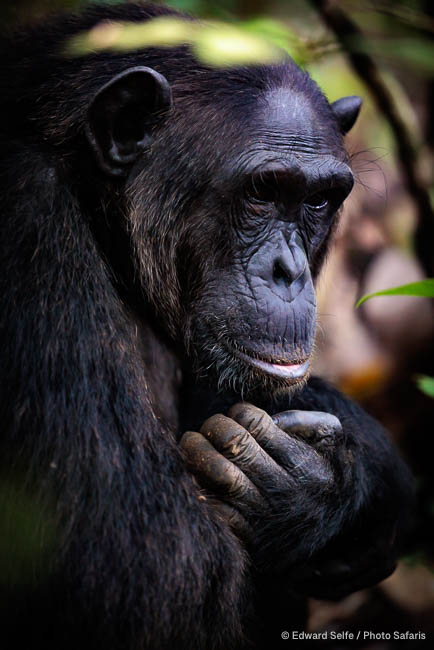
We found the chimps in every possible scenario…
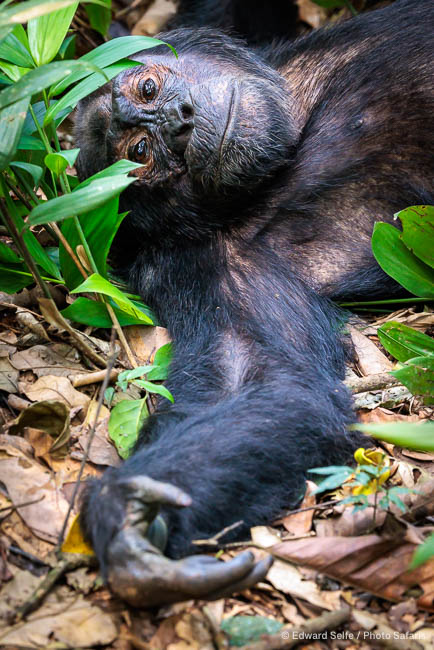
…some were pensive…..
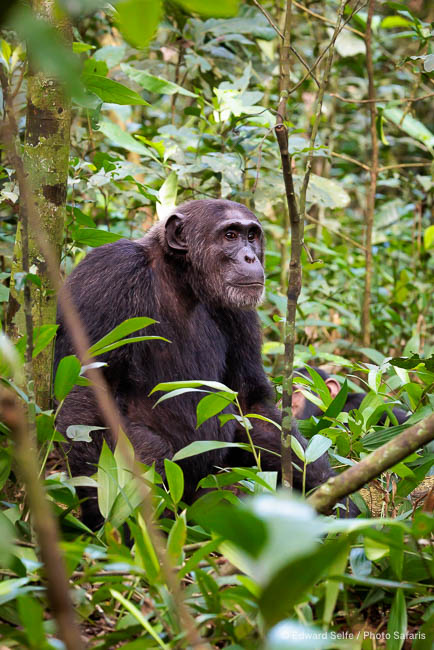
…others were grooming or resting….
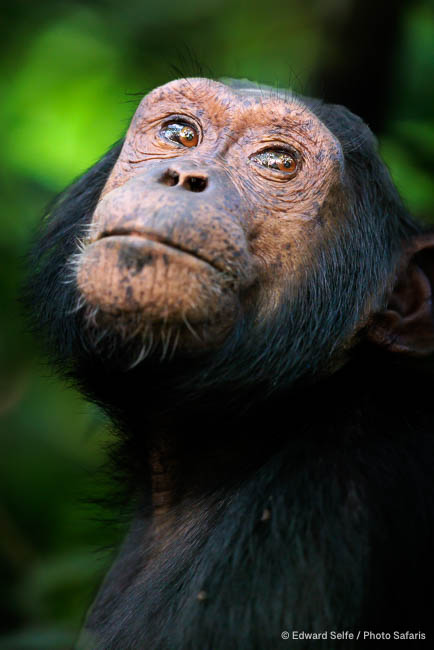
…and some were building nests.
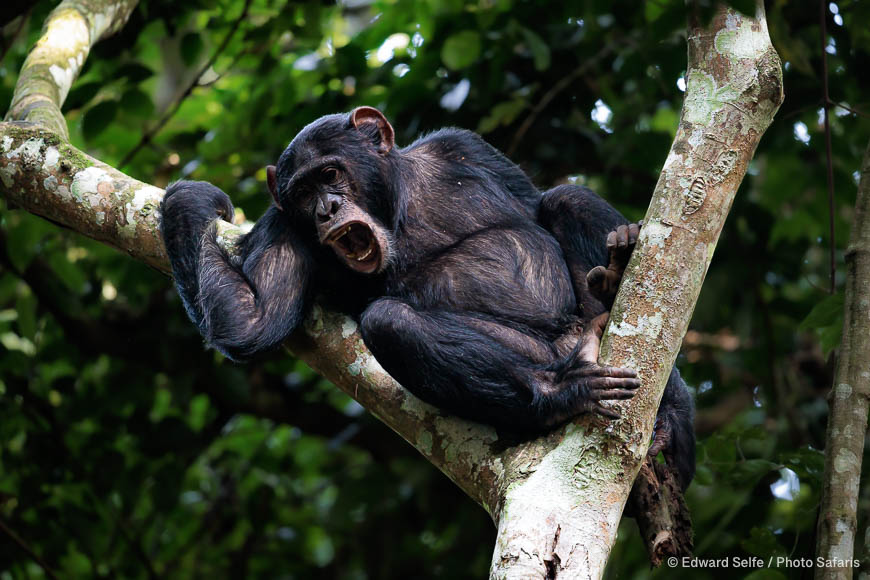
There were many more chimps high in the fruiting trees (more than 40m up) which we could barely see, so we focused on the individuals on the ground….
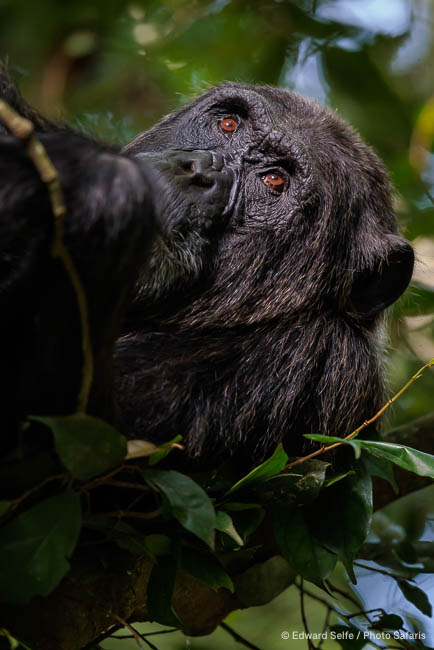
….like this old male known as Lion due to colour of his eyes.
Visiting wild chimps was a significant life-event for me; as someone accustomed to watching wildlife, and who enjoys sitting and observing baboons, it was thrilling to see these great apes at close quarters. Initially I wasn’t sure how to respond to their total disregard for our presence….it felt strange. But I soon learned that their habituation has created a situation where we are not only tolerated, but almost invisible. As trekkers approach, chimps will respond to the sound of movement (as they would if it was a duiker or a bird or another chimp) but will then return to their normal activities. Once they know you are there, your movements are largely ignored, giving us a chance to observe them in their natural space, making their nests, grooming their colleagues or simply resting, without any impact at all. It’s a spectacular experience which I won’t forget anytime soon.
The Crater Lakes, Northern Queen Elizabeth NP & the Kazinga Channel
In 2024, we will spend a night at Ndali Lodge, among the great crater lakes in the Fort Portal area. We passed through on our way south from Kibale Forest towards Queen Elizabeth NP. From there, we continued south and spent the afternoon exploring the northern section of QENP, both in the vehicle and from a boat on the Kazinga Channel, a 40km long waterway which connects Lake Edward with lake George.
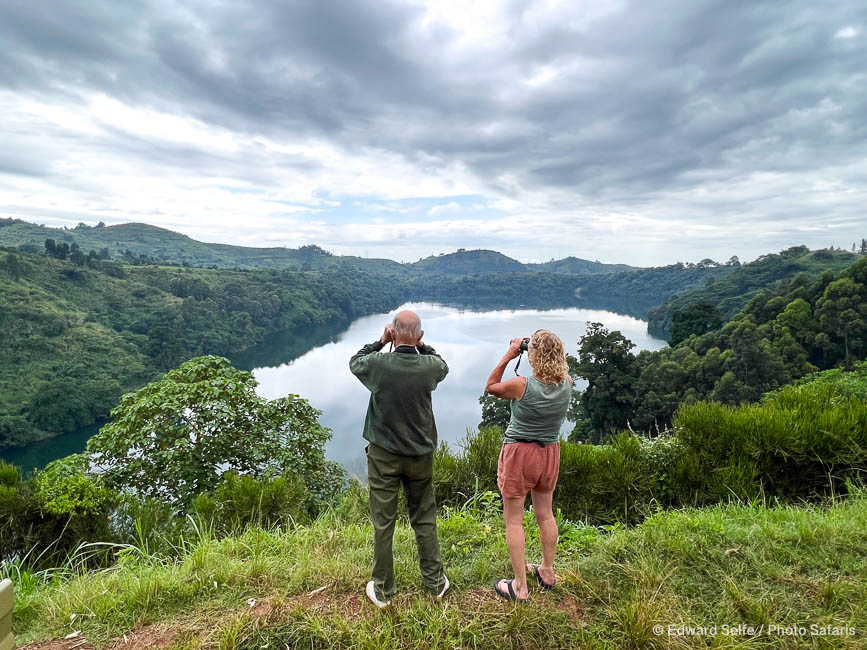
The road approaching Ndali Lodge passes along the rim of Lake Nyinambuga, a 110m deep crater lake in the highlands south of Kibale NP.
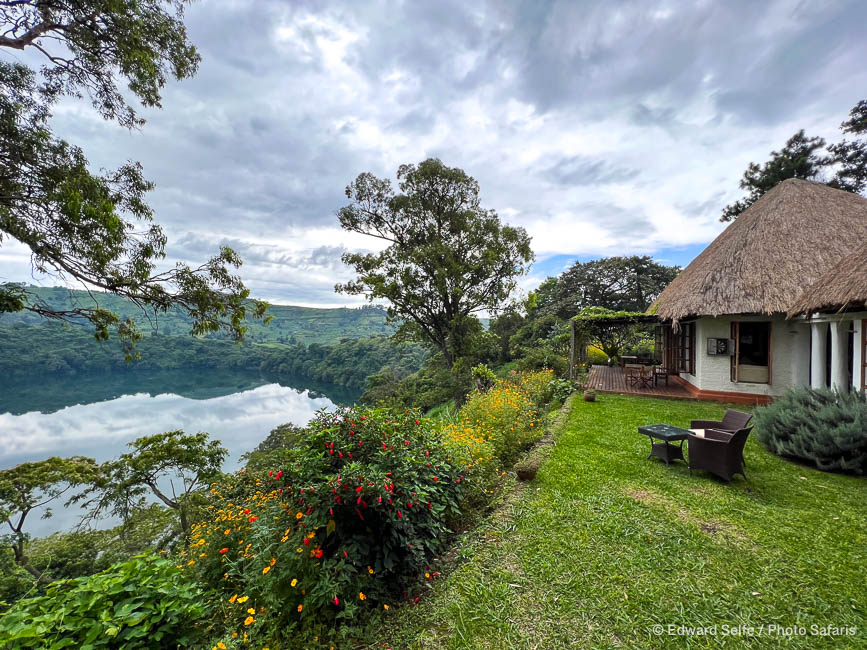
And the lodge itself has wonderful views over the same lake…..
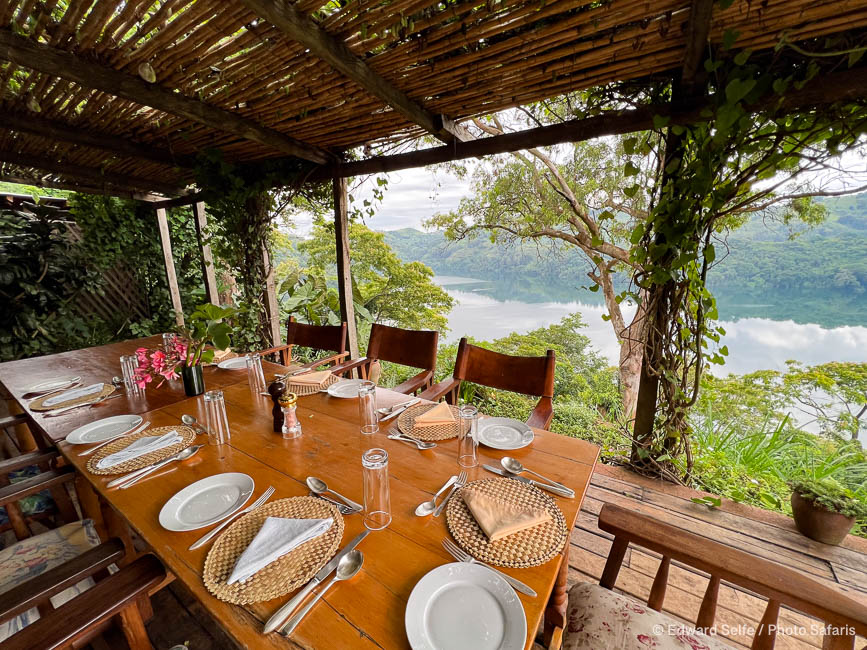
Meals are taken with this view, while activities include walking around the lake, kayaking and swimming in the cool waters.
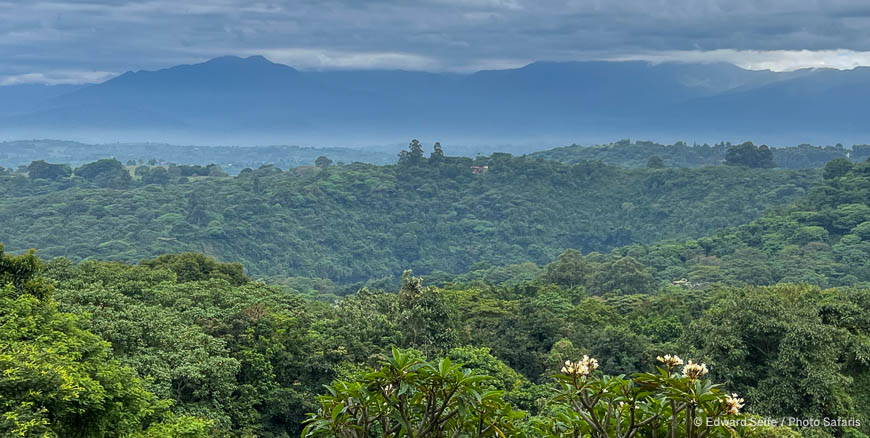
To the west of the lodge, there are spectacular views across to the Ruwenzori Mountains and the DR Congo beyond.
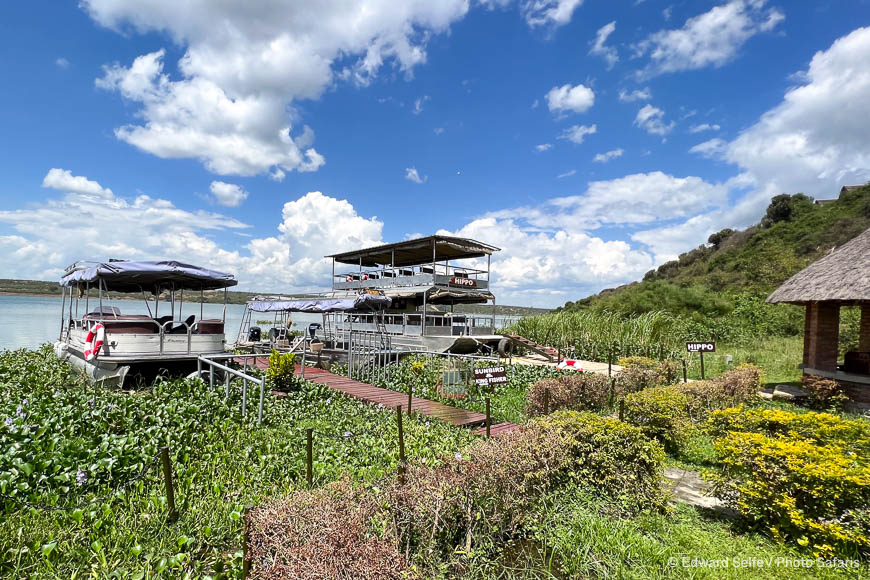
After crossing the equator, with obligatory photo stop(!), we moved on to the harbour for boat cruises along the Kazinga channel.
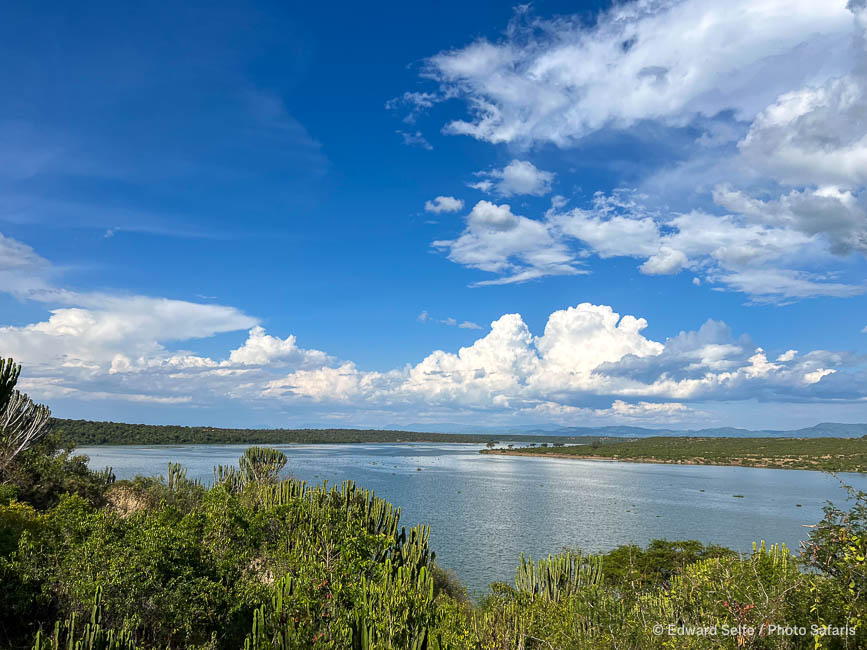
View from above the harbour.
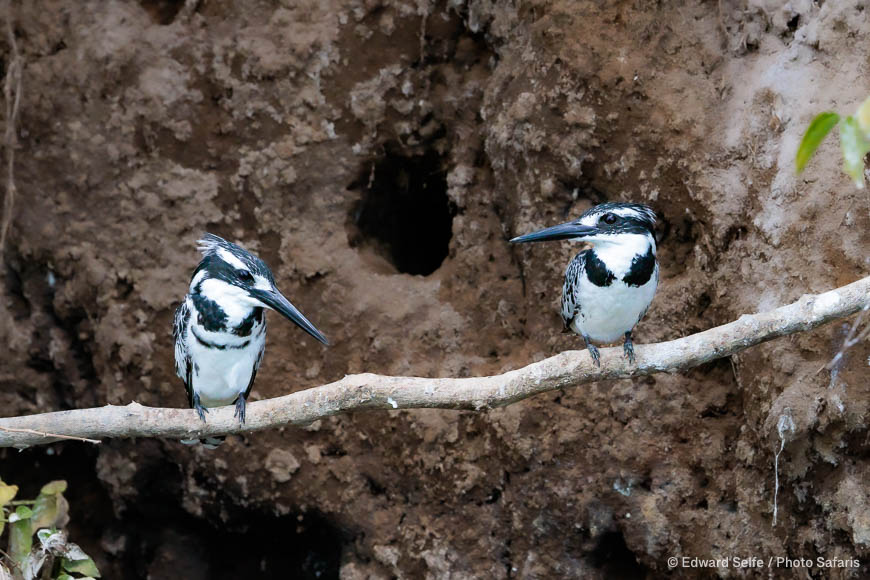
There were large numbers of water birds, including a colony of breeding Pied Kingfishers which was at least 2000 strong…I have surely never seen anything like it.
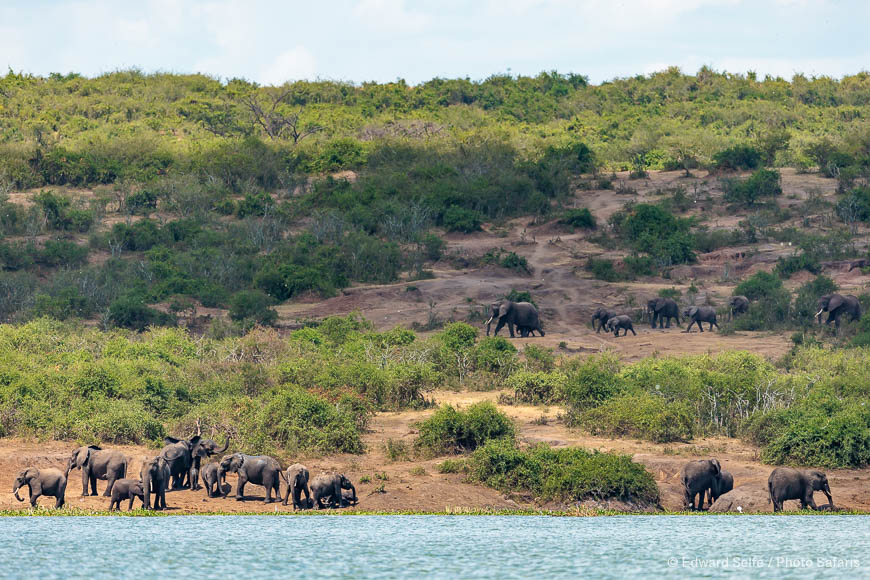
All along the banks web elephants, with buffalo and hippos alongside. Our boat was larger than we would normally use, so we couldn’t get as close to water-level as I would have liked but the photo opportunities on such a trip, using a private boat as we would have in 2024, are excellent.
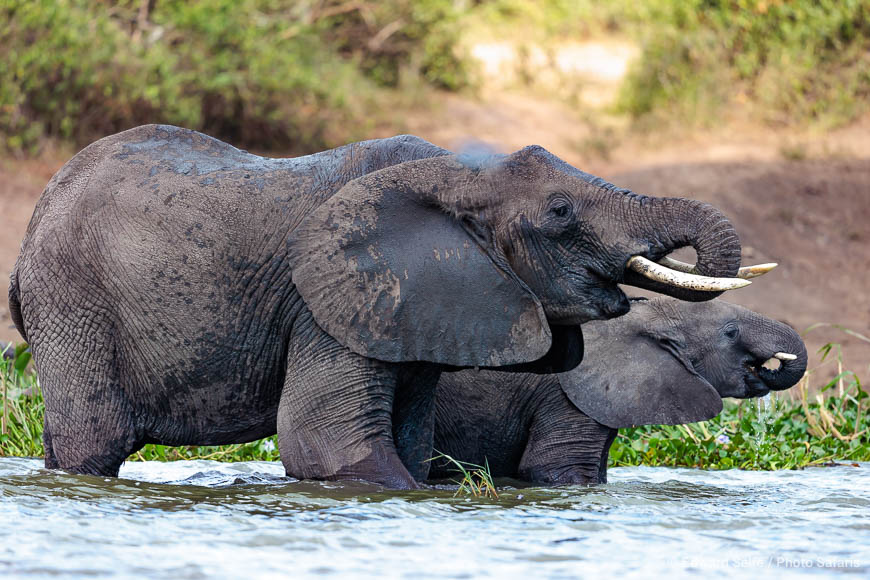
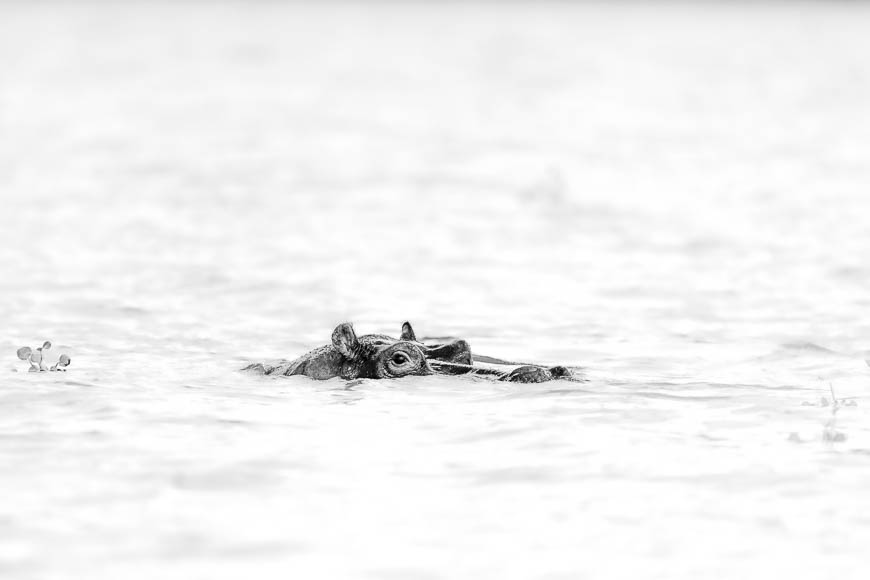
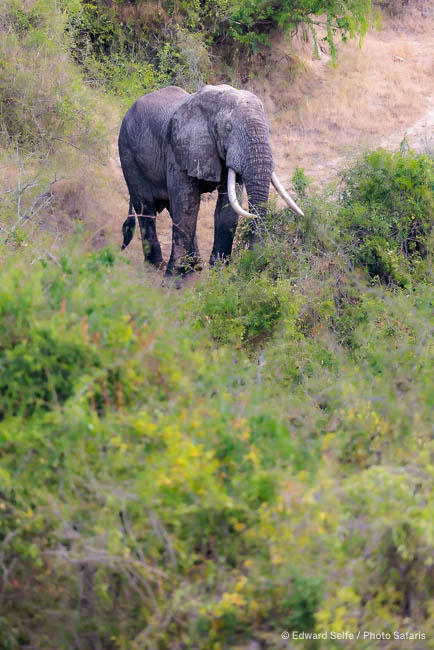
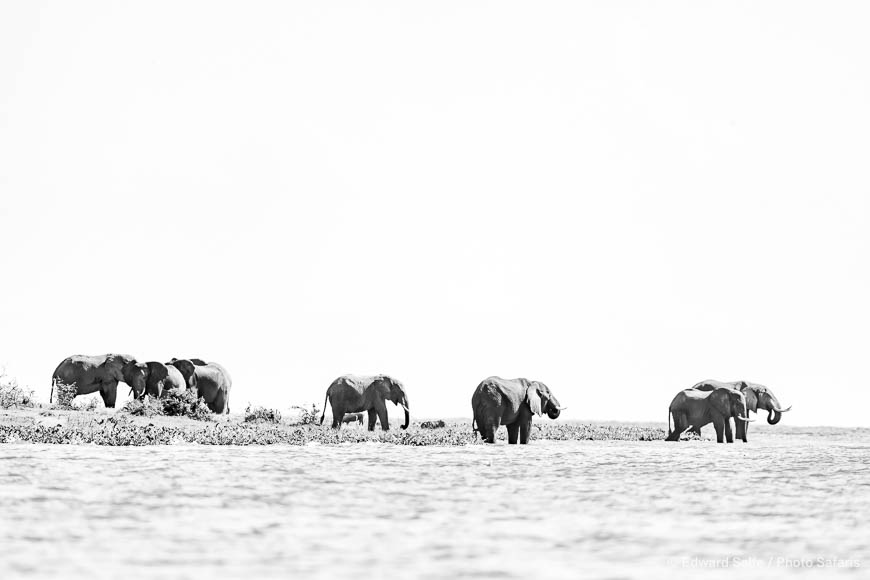

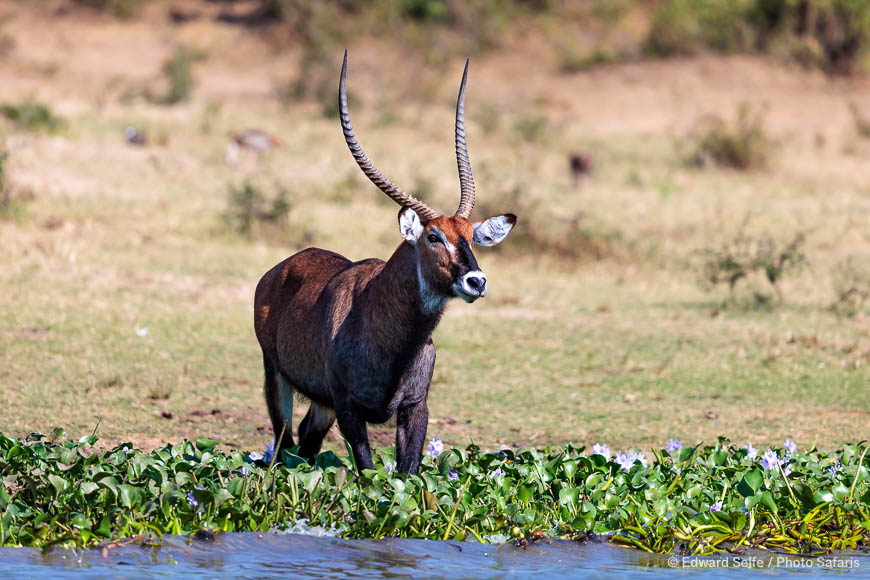
A superb waterbuck ram on the banks of the Kazinga Channel.
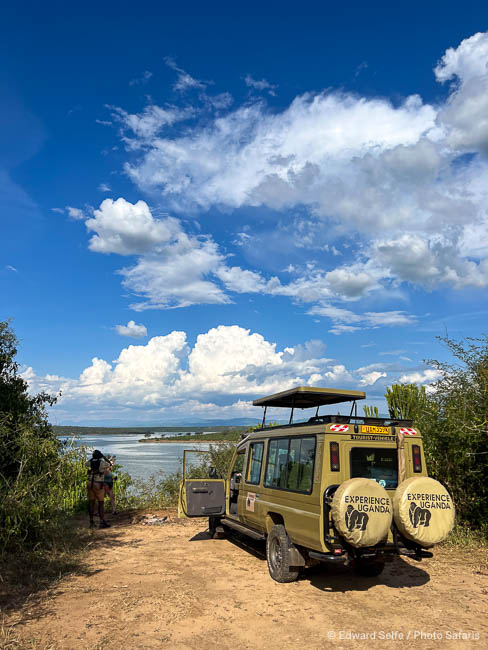
Our very comfortable, and fit for purpose, stretched Landcruiser which we used for all our transportation and safaris during the trip.
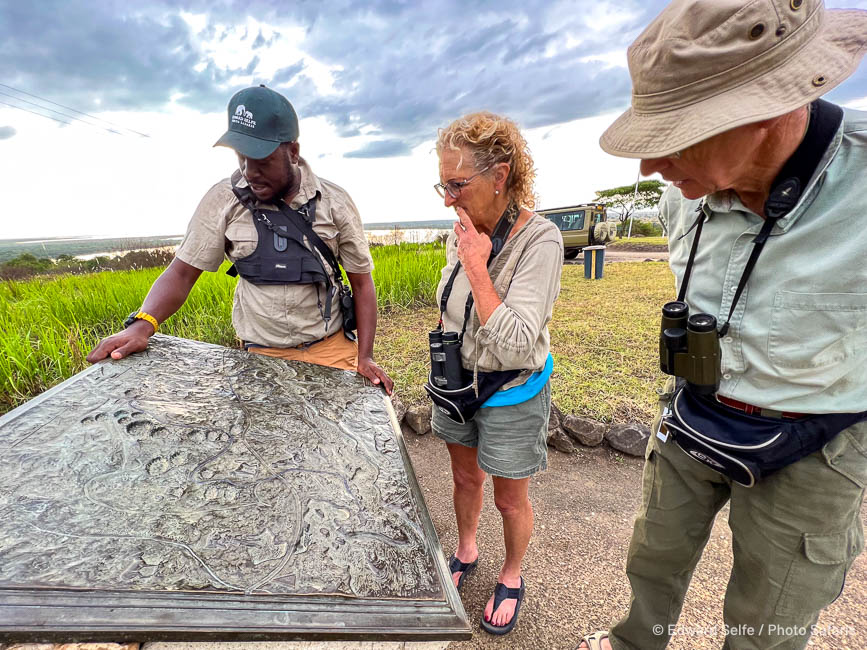
Heading back to the lodge, we stopped to explore the Queen Elizabeth Pavilion, an imposing structure on a rise overlooking the northern part of QENP. HM Queen Elizabeth had lunch at this site after staying at Mweya Lodge nearby as a newly coronated monarch.
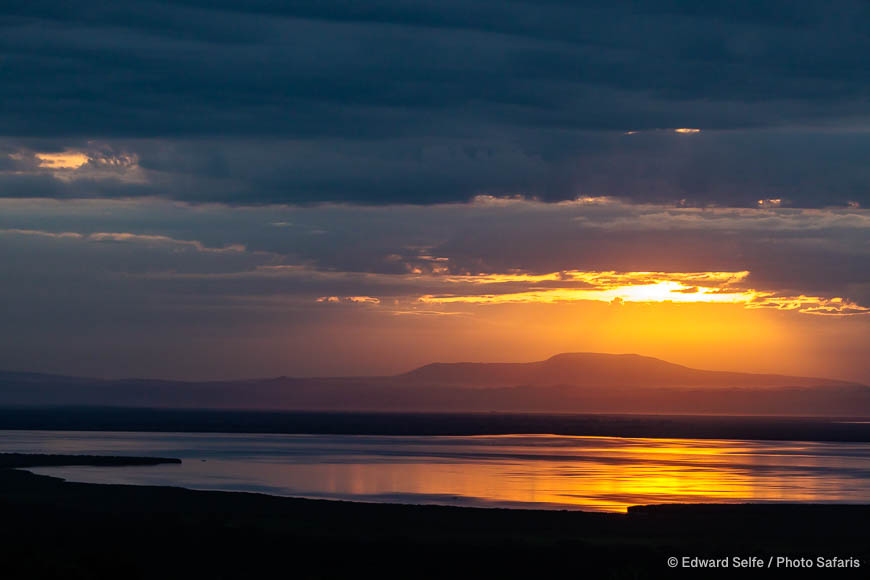
Sunset over the rift valley.
Ishasha Sector, Queen Elizabeth National Park
Continuing south, we crossed the Kazinga channel and drove around 100kms south through the QENP, stopping occasionally to watch birds at water points or enjoy hippos and elephants wallowing in mud holes by the road. But mostly we transited south, through the Kalinzu forest towards the Ishahsa sector in the south of QENP; it was here that we arrived at Ishasha Wilderness Camp, the only lodge inside the National Park, placed in a beautiful position on the Ishasha River which drains into Lake Edward.
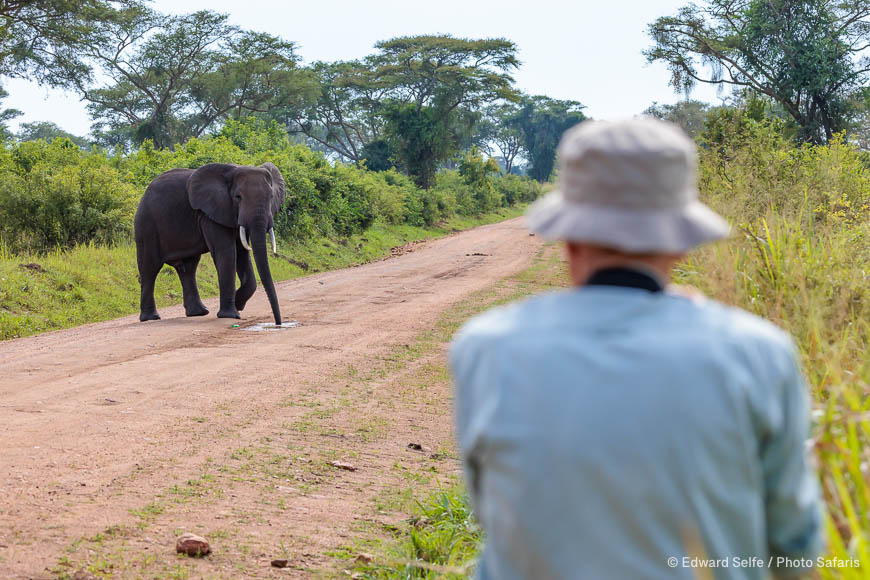
Transiting through the northern part of QENP, we saw lots of elephants in the beautiful habitat.
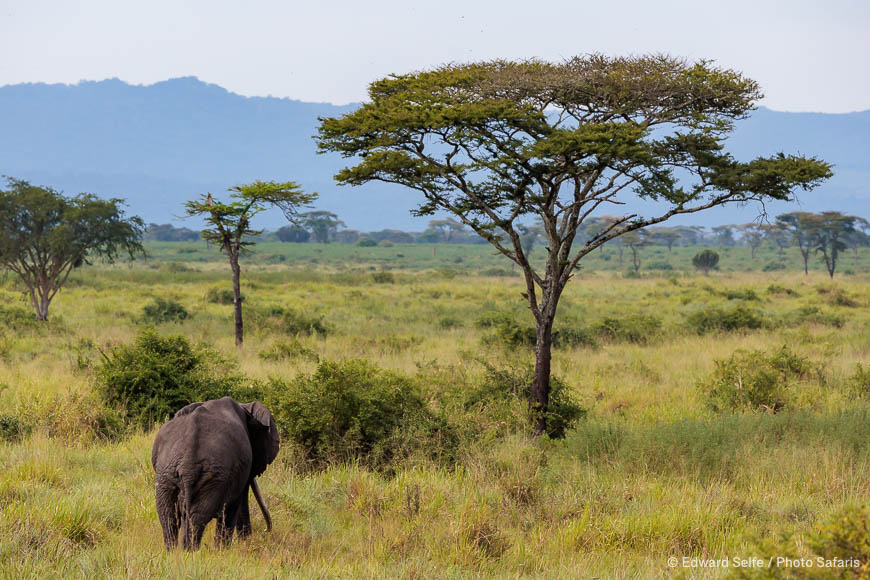
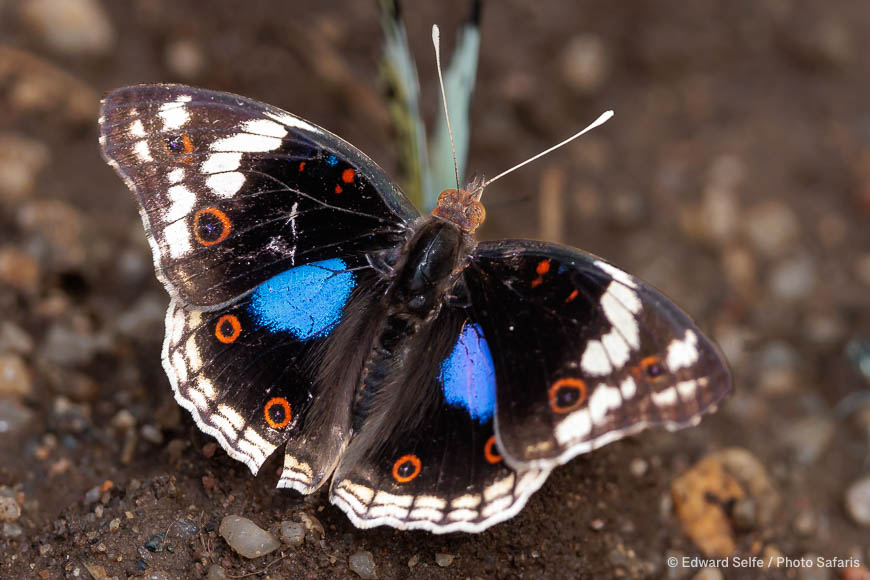
June is butterfly season in Uganda and in places there were pansies such as this one…..
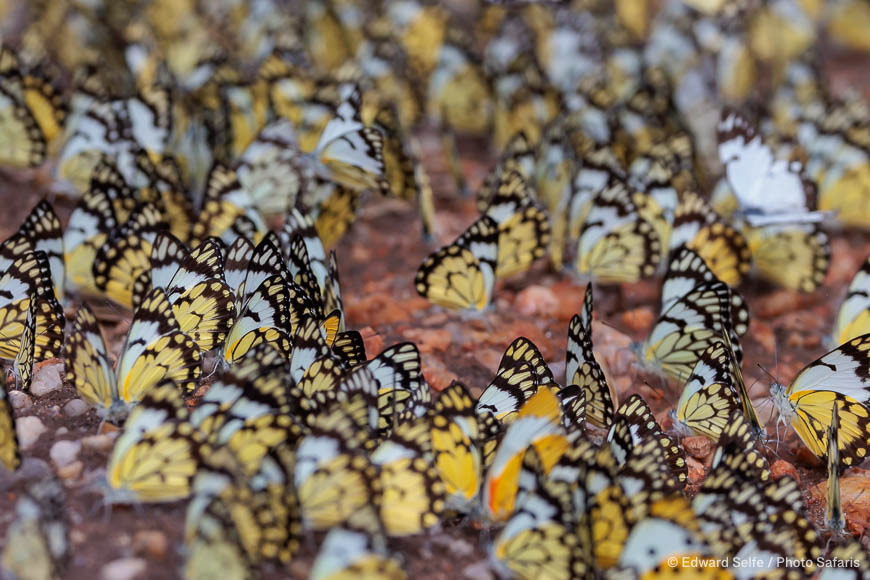
….and millions (hundreds of millions?) of African veined whites. It was an extraordinary sight, and made us wonder the impact that so many caterpillars would have had on the vegetation of the area.
From Ishasha, we had just 1 night to explore the beautiful grasslands and mosaic of acacia trees (in the area closer to the camp) and fig trees (further south from camp). In the full tour in 2024, we will have 2 nights at Ishsaha Wilderness Camp allowing us time to enjoy the birding and photo opportunities of the kob, topi and buffalo herds in the morning light, as well as hoping to see the hyaenas clans hunting at dawn. We will also allocate time to looking for the lions of Ishasha which have developed a habit of climbing into the branches of fig trees to escape the heat, offering unusual photo opportunities.
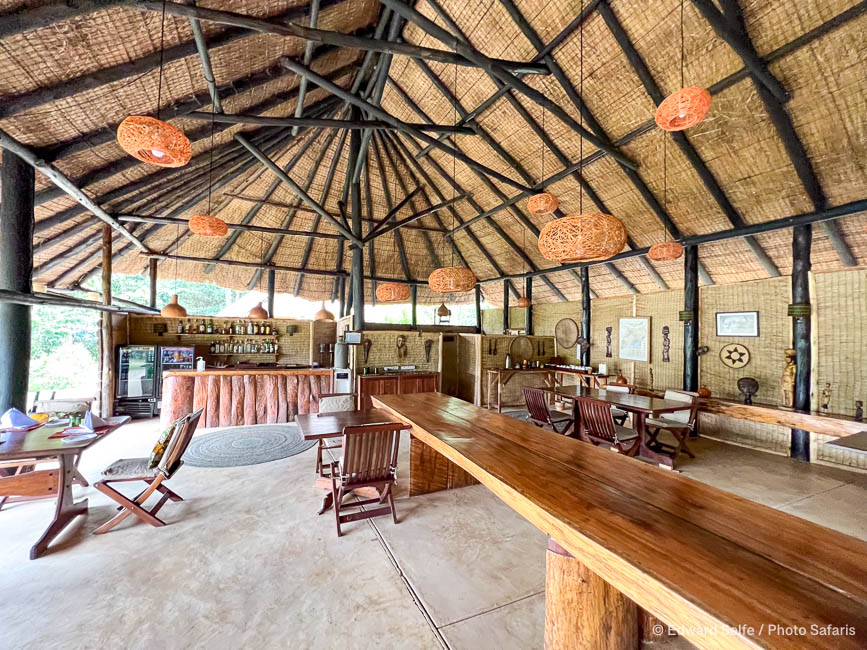
The well-considered central living area of Ishasha Wilderness Camp….
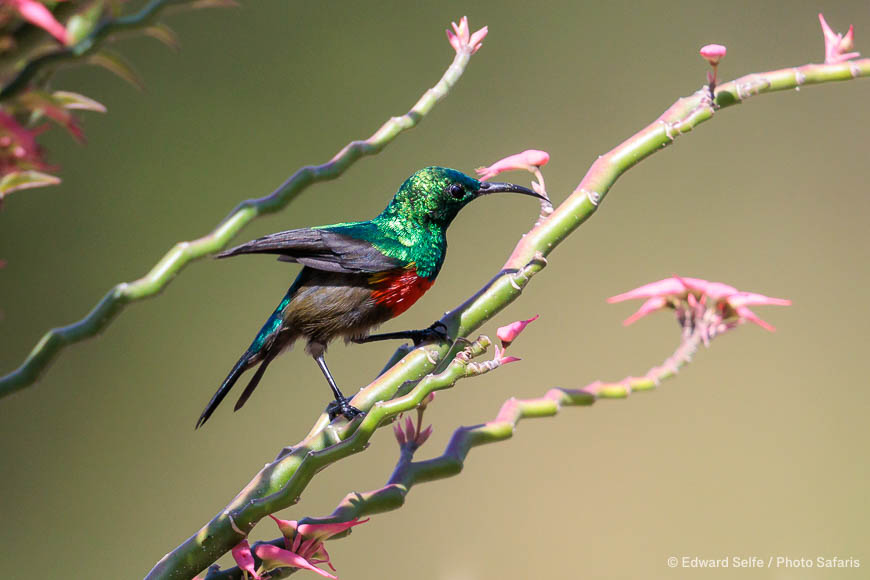
…with their resident Olive-bellied sunbird.
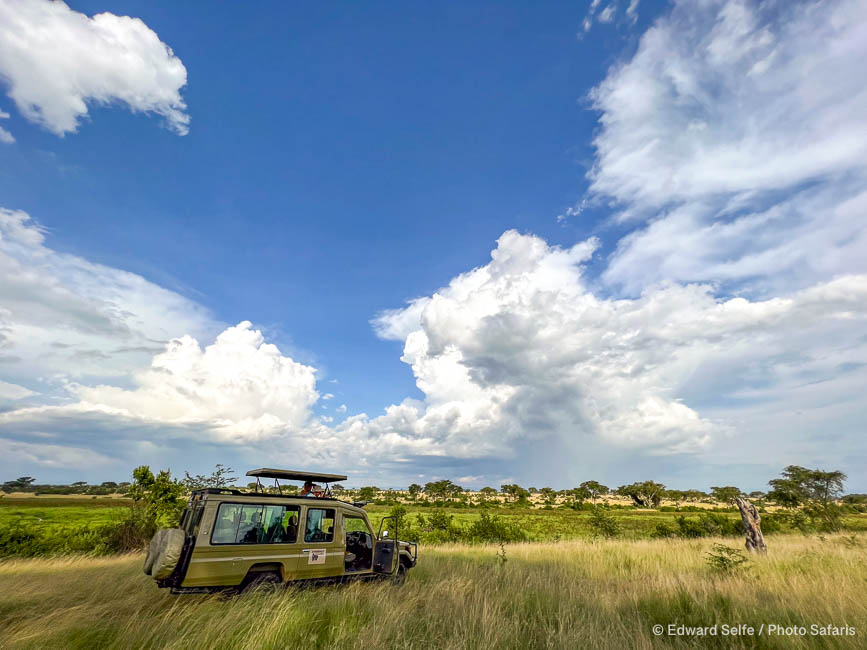
Starting to explore the grassland in the area around camp.
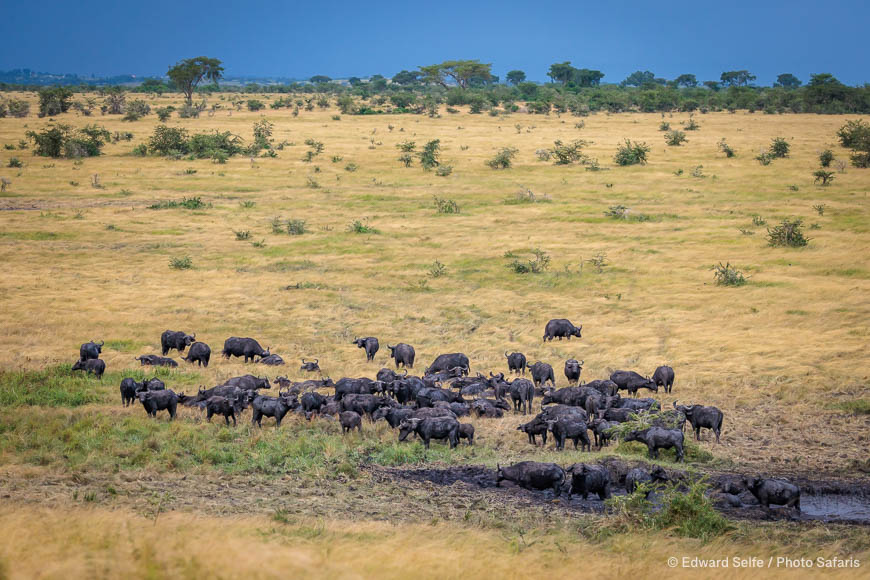
Buffalo herds feeding on the ample grassland of the park.
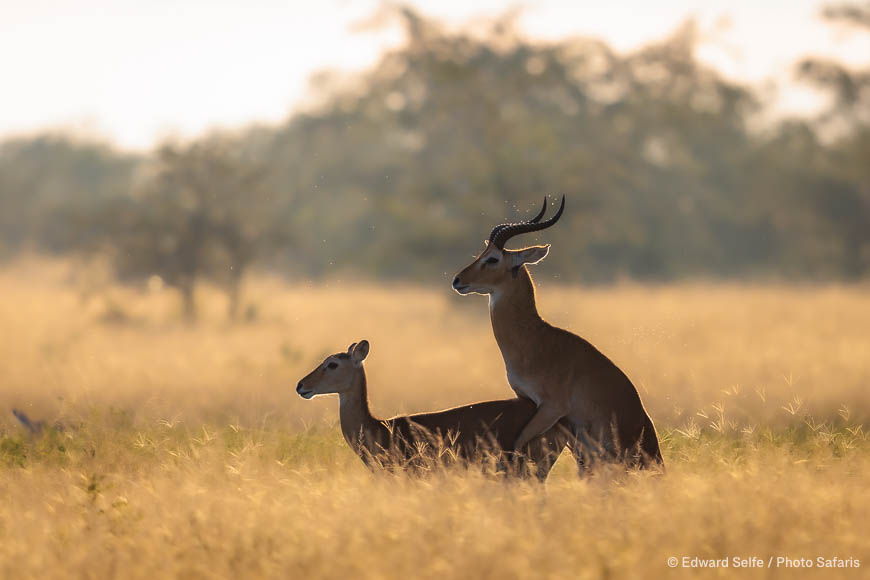
Uganda Job mating; there is a lek (a mating ground where males compete for dominance and oestrus females come from all around to mate with the male who is current ‘top-dog’).
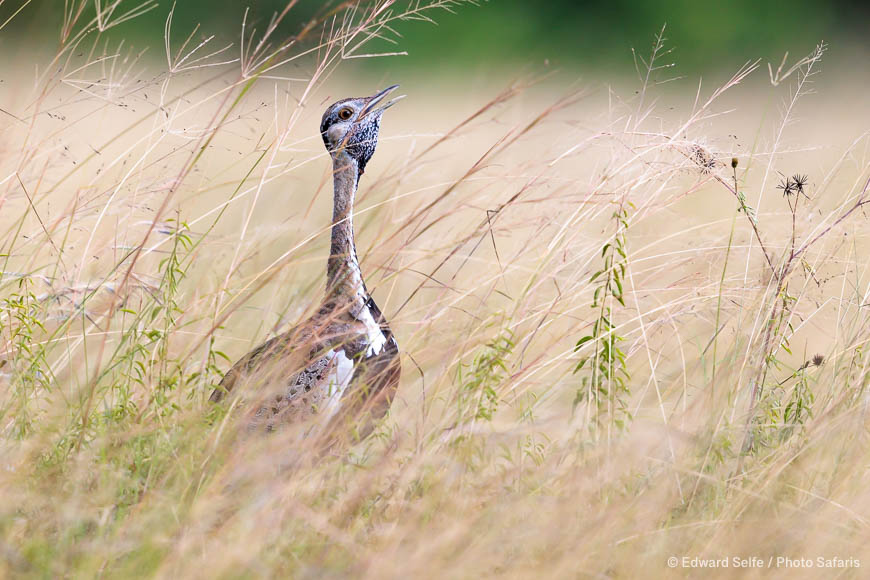
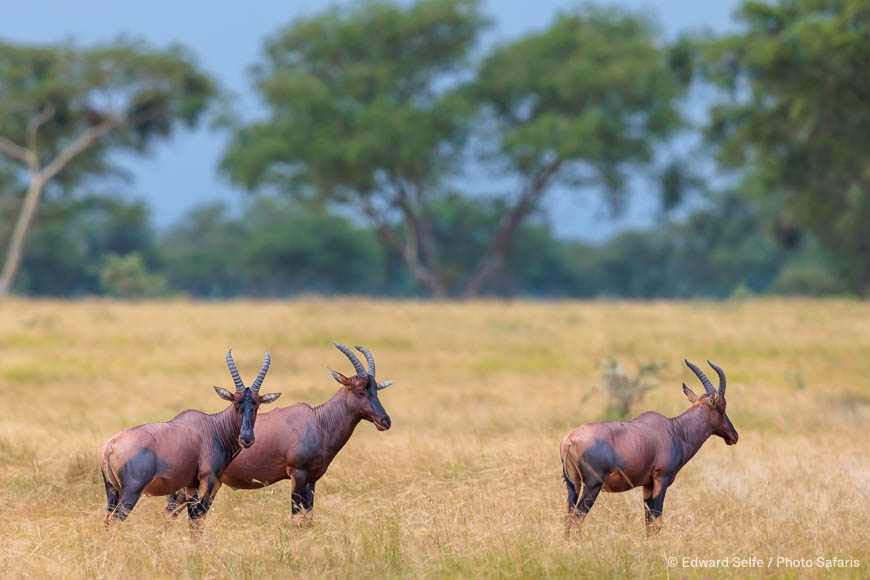
Topi are abundant in the park and one of the East Africa specials.
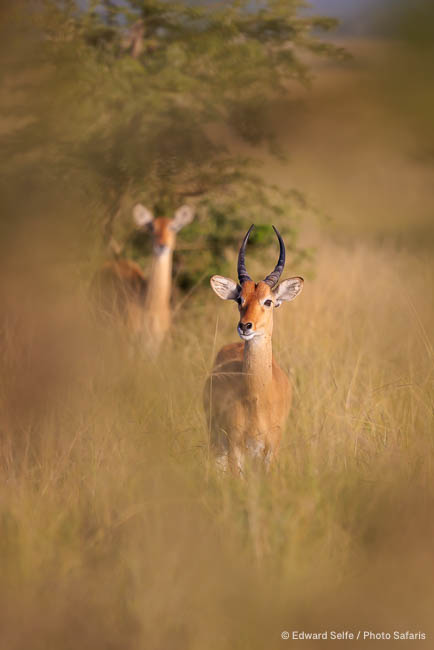
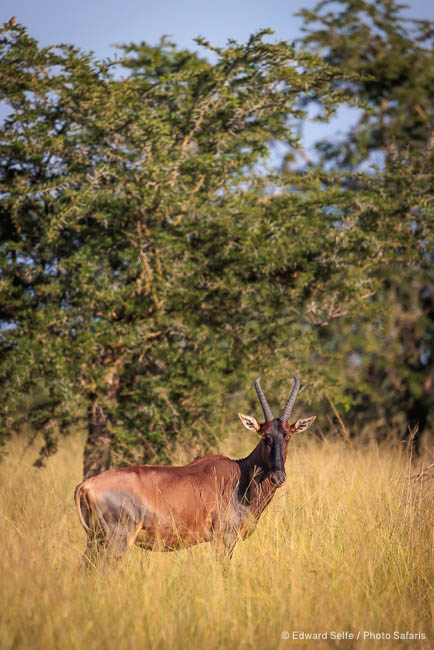
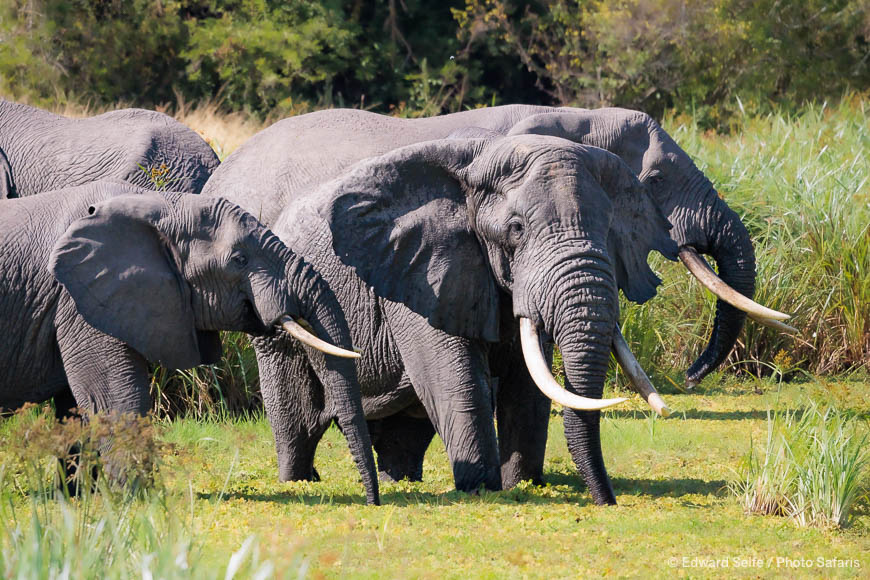
We were very fortunate to meet a large herd of bull elephants emerging from the thickets to drink and feed at a small lagoon; among the smaller bulls were a couple of very large mature bulls with beautiful ivory. They kept themselves hidden among the youngsters, but occasionally we could catch glimpses of their broad heads and large tusks.
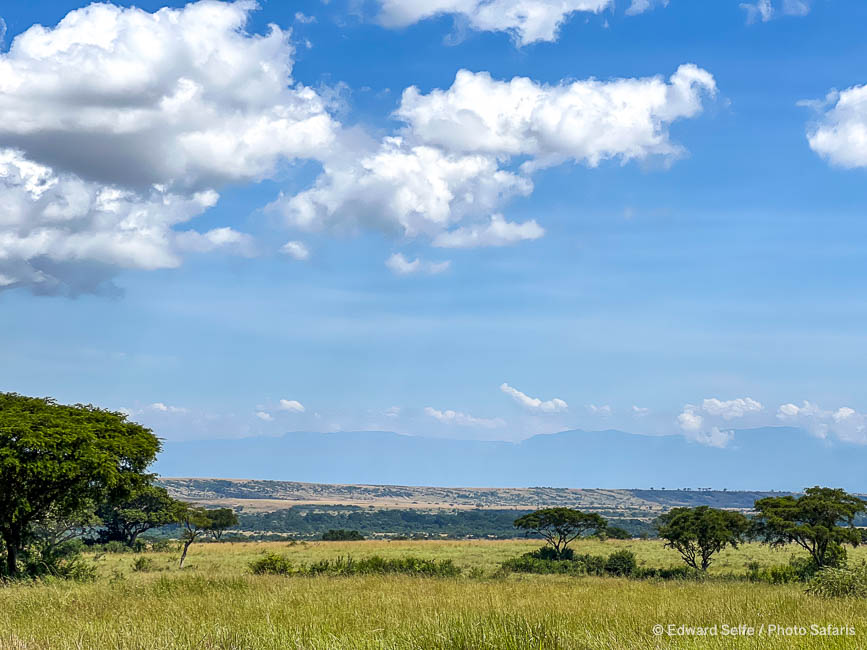
The southern sector if Ishasha where tree-climbing lions are often found in the branches of the many fig trees.
Our time in Ishasha felt rather short and I would have liked another 24 hours to read ourselves into this area and locate some of the other specials of the park; as photographers, we had spent much of the good light in the morning focused on the kob and the topi, rather than allocating any time looking for lions, for example. It will be good to have a second night in 2024.
Buhoma, Bwindi Impenetrable NP
We drove south from Ishasha, an easy 2 hours to Buhoma, the village on the northern side of Bwindi NP, where we hoped we would meet the largest of the great apes, Uganda’s mountain gorillas. We had booked into Buhoma Lodge which was in a beautiful spot overlooking a small lodge garden and then the forest beyond. The lodge was well-considered with all that we needed provided in a stylish way. My room was at the ‘top’ of the lodge, requiring a 55 step climb, but offering amazing views over the forest!
Of course, the main purpose of travelling to Bwindi was to trek with the mountain gorillas. These treks take place in the mornings since the location of the gorilla troop is unknown and it can take considerable time to reach them. So we had a free afternoon on arrival and we spent it walking the forest trails around Buhoma Lodge. It was exciting to listen to the sounds, and prepare for the kinds of terrain that we would face when trekking the gorillas the next day.
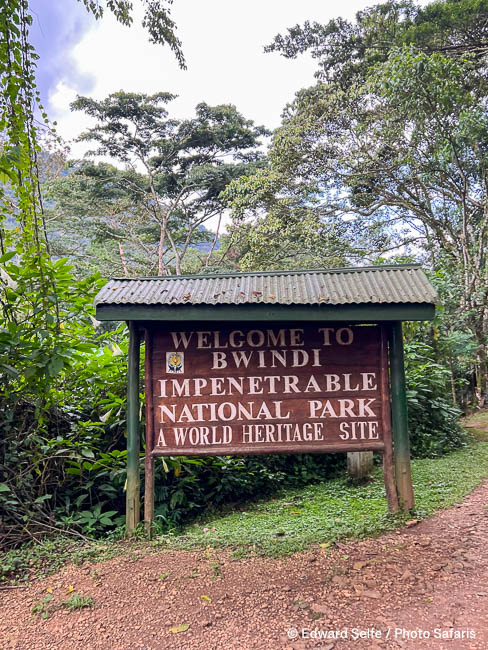
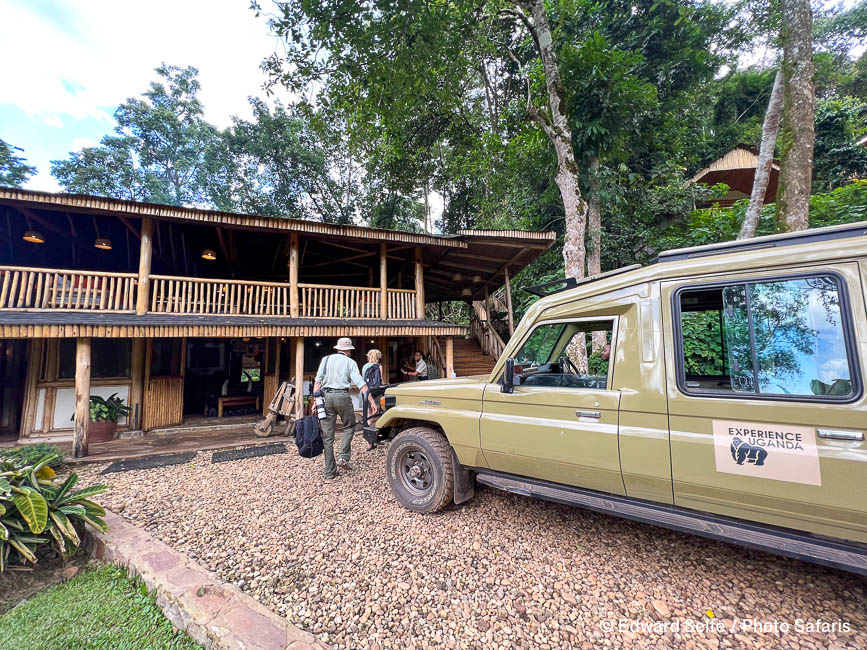
Arriving at Buhoma Lodge.
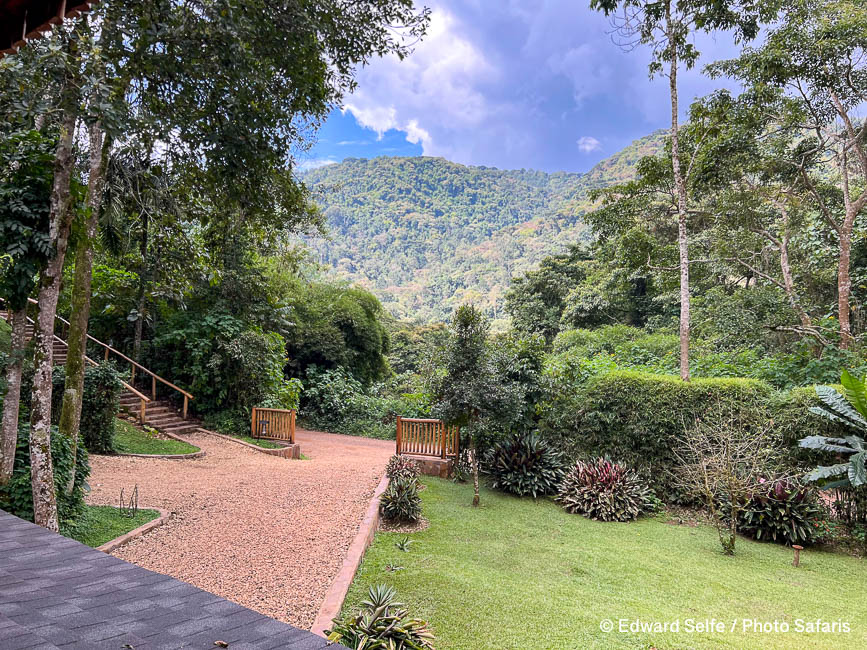
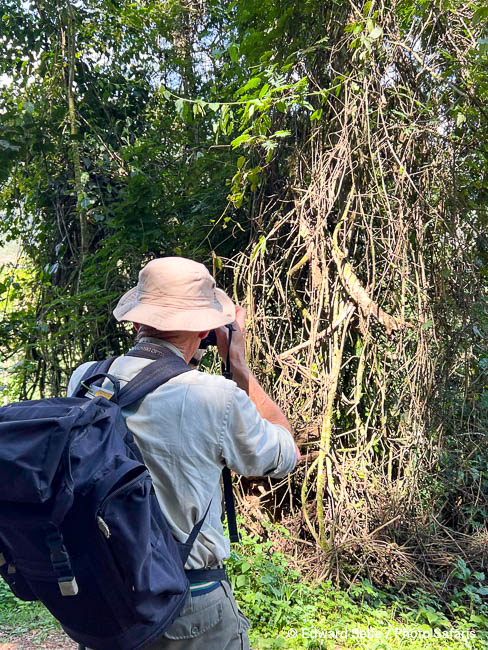
Walking the trails around Buhoma Lodge.
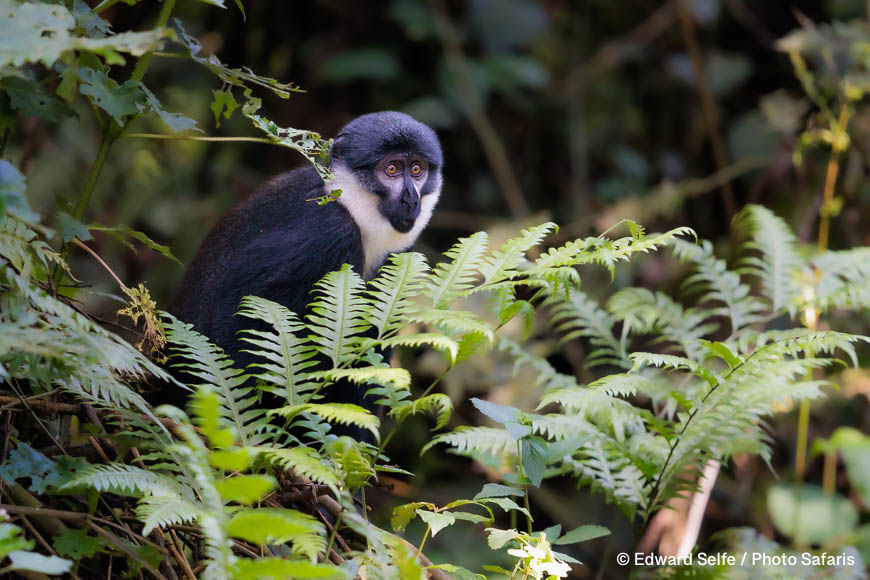
A close-up and special encounter with a L’Hoest monkey troop.
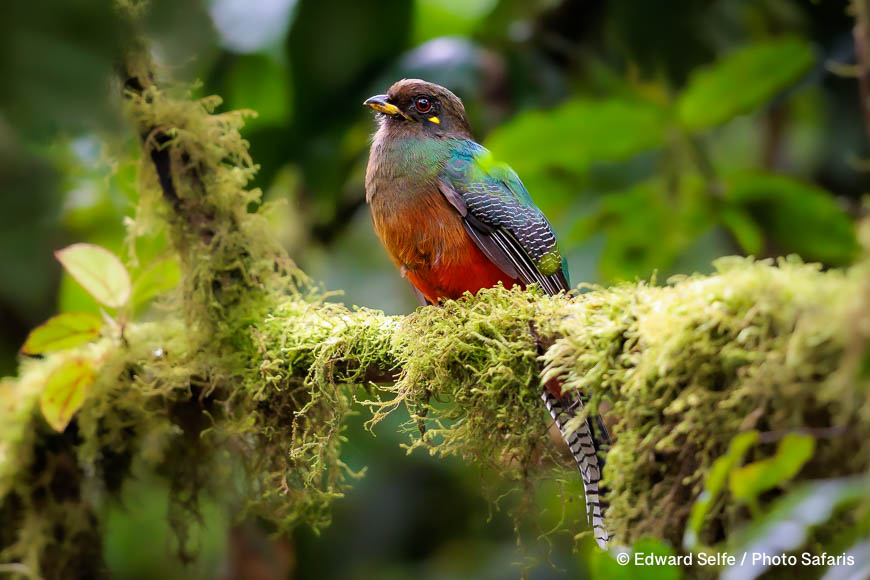
Bar-tailed Trogons are common in the forest….but getting a close sighting like this is not so common!
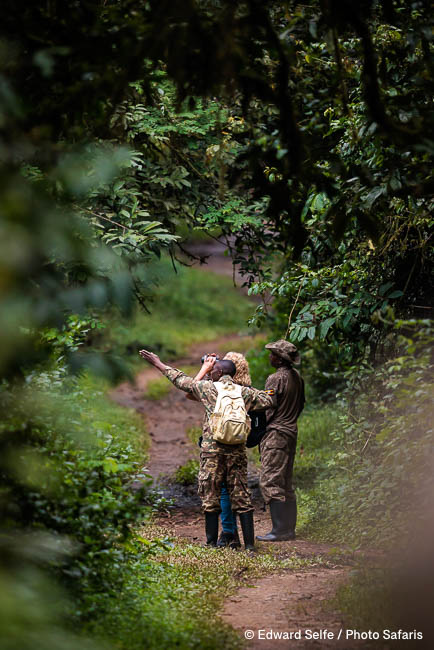
The guides from the Uganda Wildlife Authority are helpful, friendly and keen to share their knowledge of the forest.
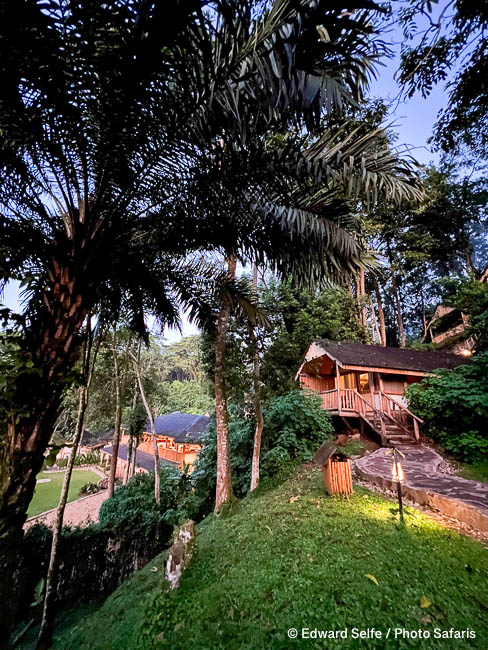
Waking up early at Buhoma Lodge on the morning of our gorilla trek.
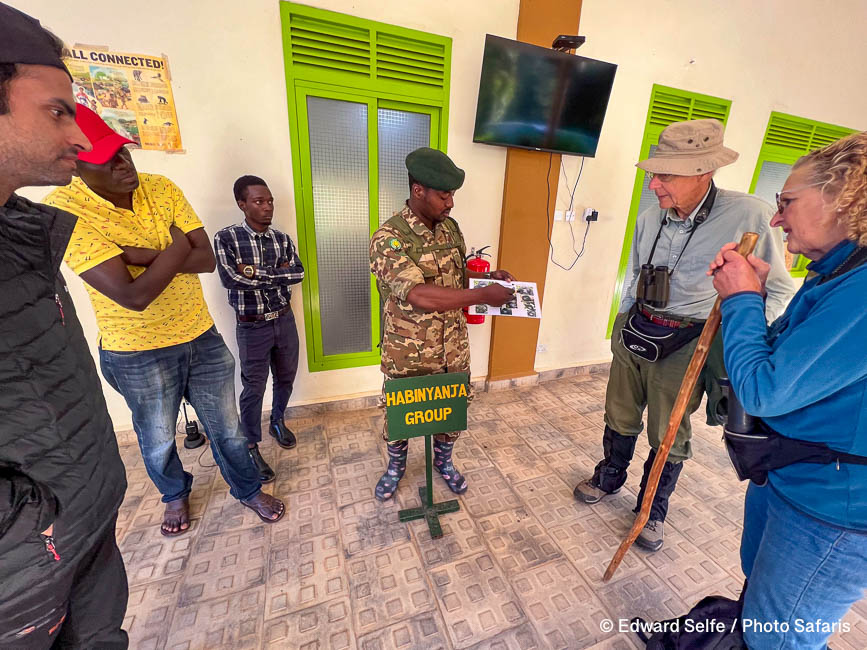
At the park HQ, there is a very comprehensive and professional briefing about the conservation of Bwindi’s gorillas as well as what to expect on the trek.
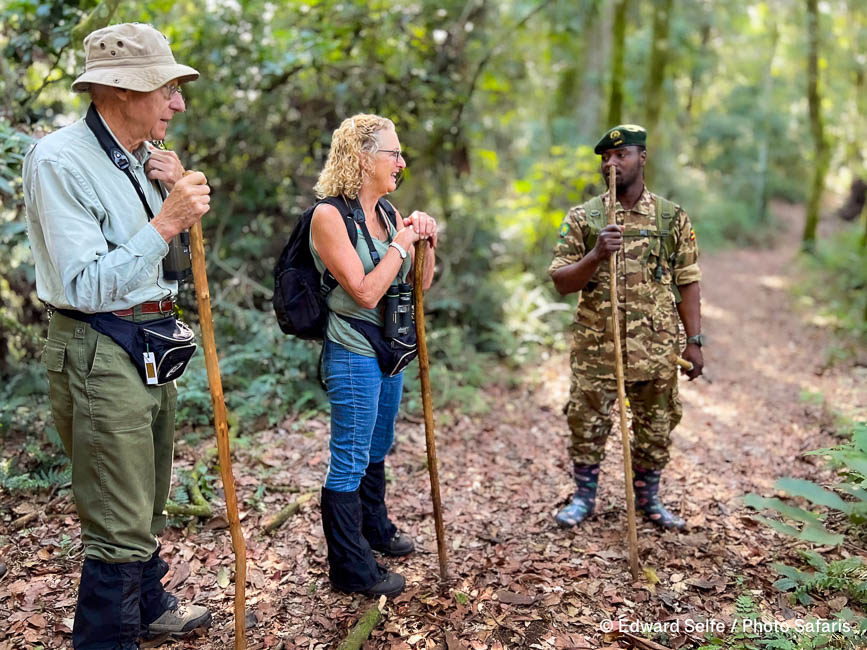
Trekking with Joshua, whose father had been a scout in the early days of gorilla habituation in 1981.
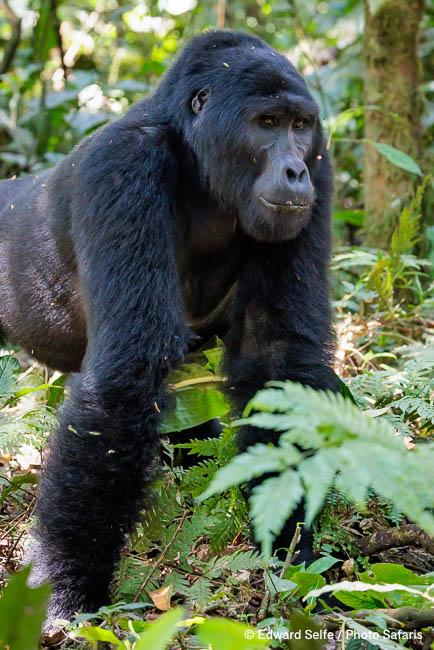
It’s hard to prepare yourself for the moment when you first encounter the gorillas; their size, and the easy way that they navigate the steep and unforgiving terrain of the forest.
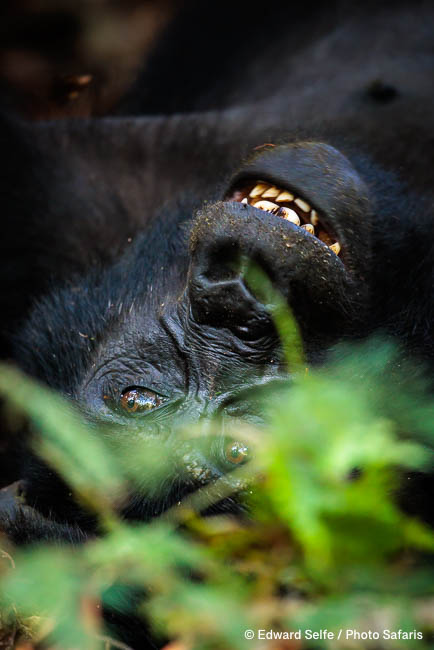
It’s fun to spend time with the youngsters of any mammal group since they are often the most active; this group of 5-6 year olds was very entertaining, playing with each other, and engaging with us as visitors. This youngster is smiling….while rolling upside down on his back!
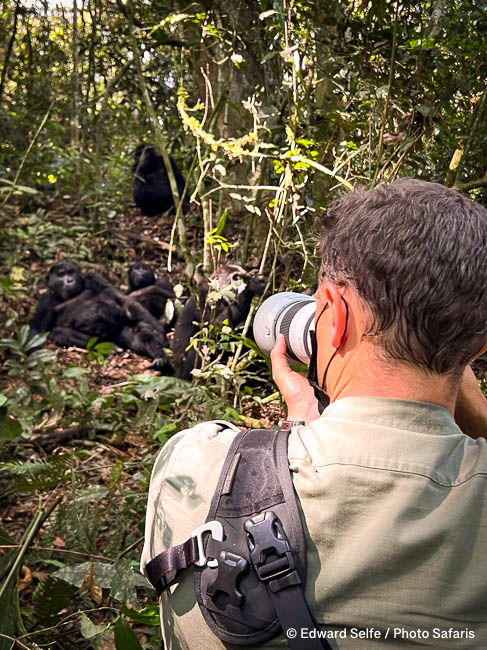
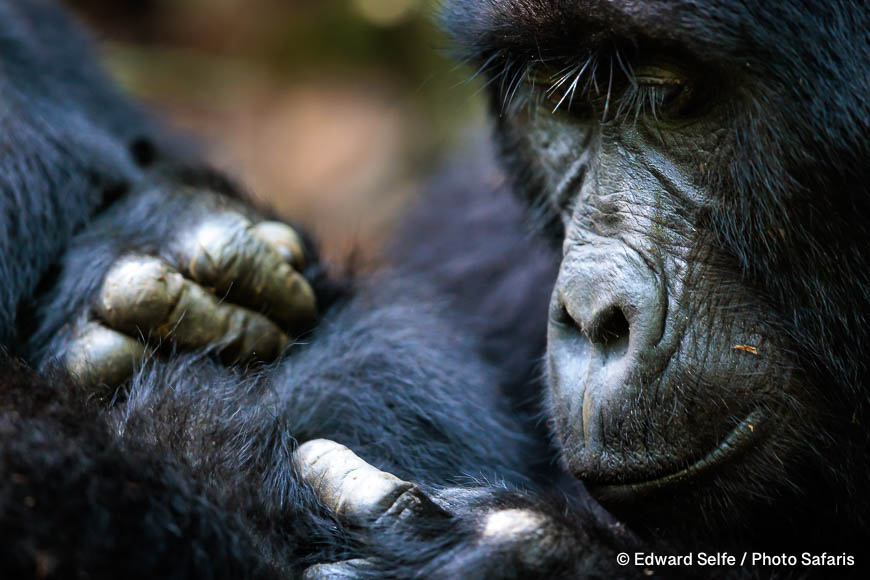
Allo-grooming is a common and widespread behaviour in mammals to bond troops and herds together.
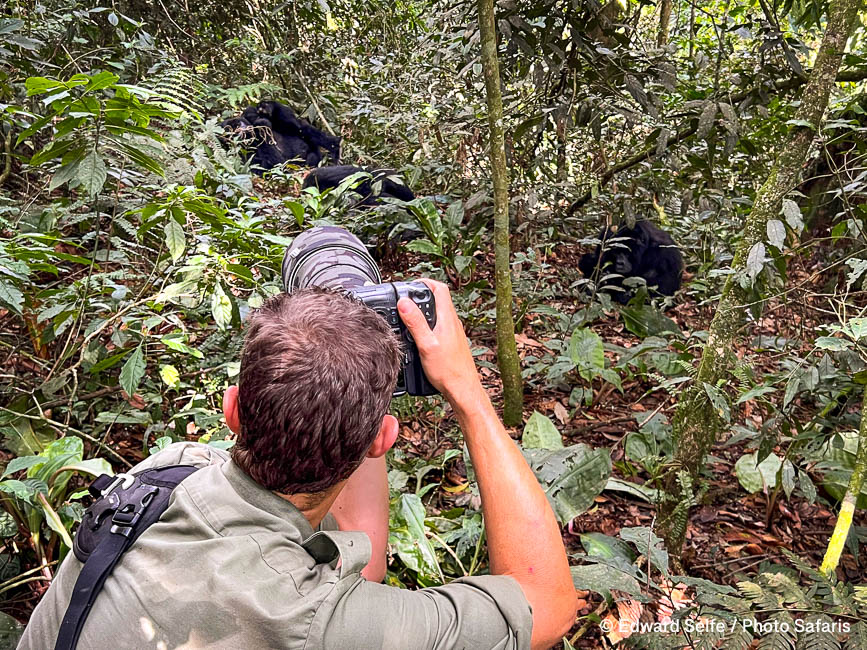
The forest is sometimes thick and ‘jungly’; the gorillas move through it with ease, but it’s much harder for us to navigate. I chose to sit in a clearing and wait for gorillas to move through it, a technique which worked well and gave me some lovely moments.
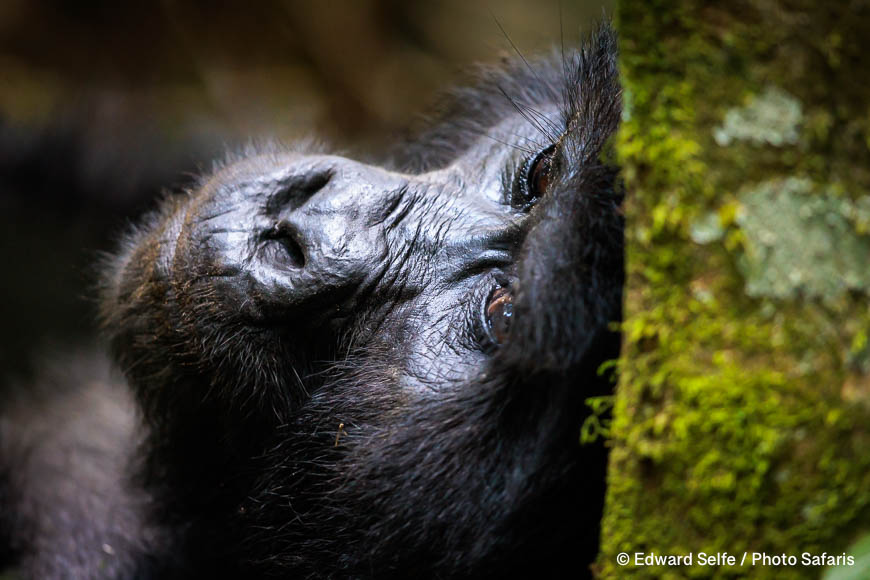
An adult in contemplation….
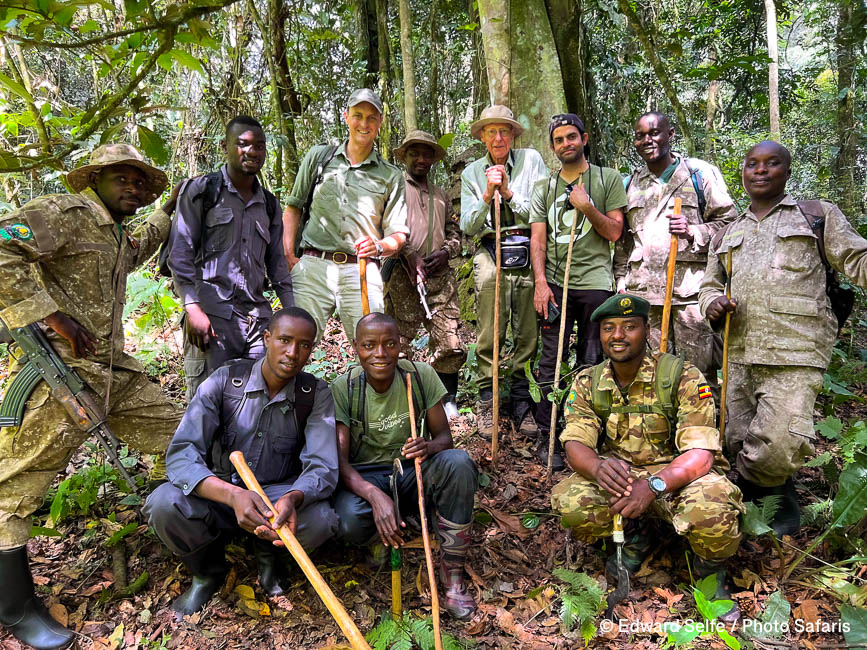
Before we knew it, our hour was up and we left the troop in peace. Our whole group, including the porters who assist with carrying bags over the rough terrain gathered for a photo; it’s clear to see the direct impact that tourism has on the community in this area, and hopefully the considerable income from gorilla trekking will ensure the future of the forest on which the gorillas depend.
We had a second night at Buhoma Lodge where we reflected on the extraordinary fortune we had enjoyed; not only to be there in the first place but also to have met with a receptive group of gorillas which allowed us a brief, but intense, window into their worlds. It’s a truly memorable experience and one which still makes me smile whenever I think of it.
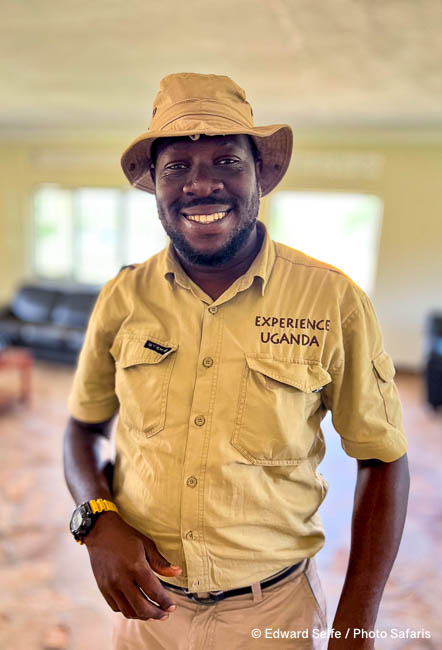
We said goodbye to Kamya, who had been our guide throughout the trip, at Kihihi airstrip the day after our trek. We were flying back to Entebbe and he had new guests to meet. He had been fantastic and we felt fortunate to have met him and enjoyed his insights, experience and highly educated perspective on Uganda and the world.
Mbamba Swamps, Entebbe
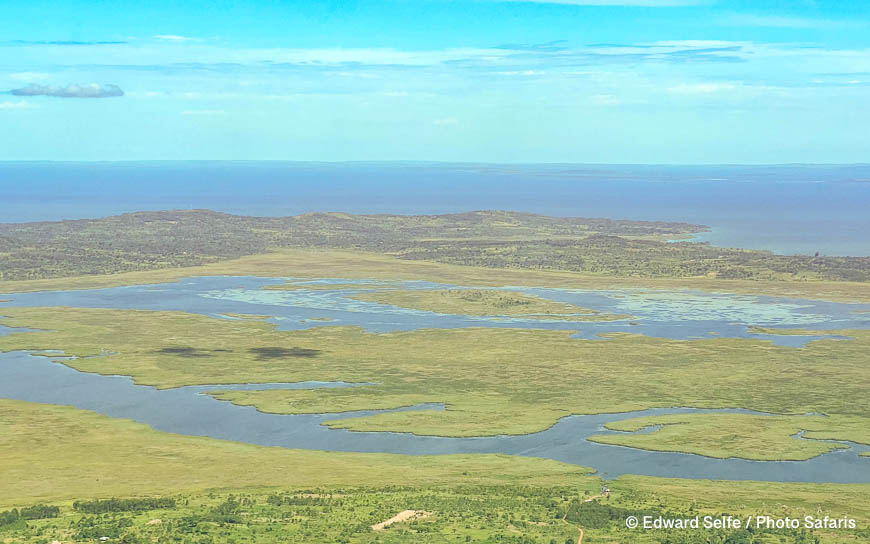
Flying back from Kihihi to Entebbe, we passed over the Mbamba Swamps where we would be exploring and looking for Shoebills the following day…
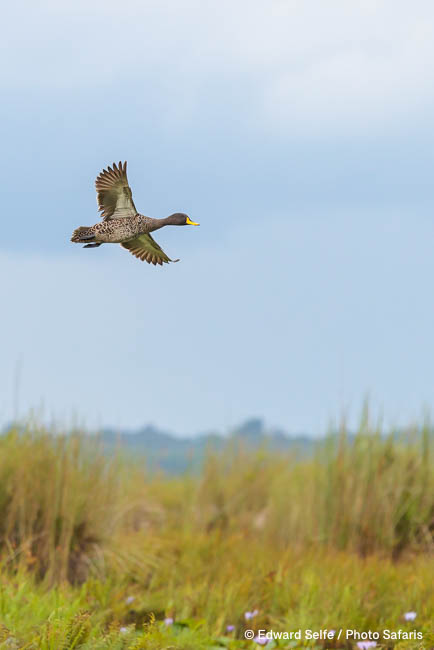
While looking for Shoebills, we had ample time to enjoy the other birdlife of the swamps…this time a Yellow-billed Duck above the lilies.
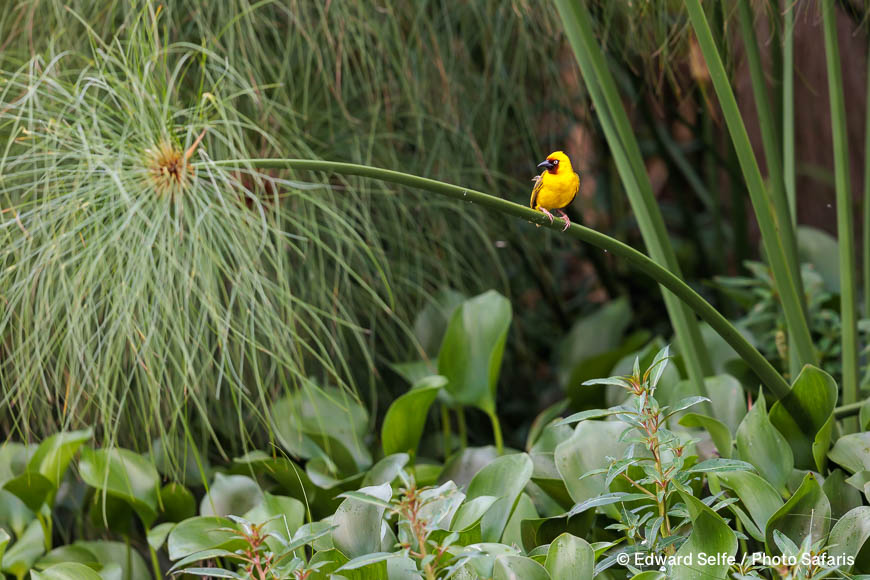
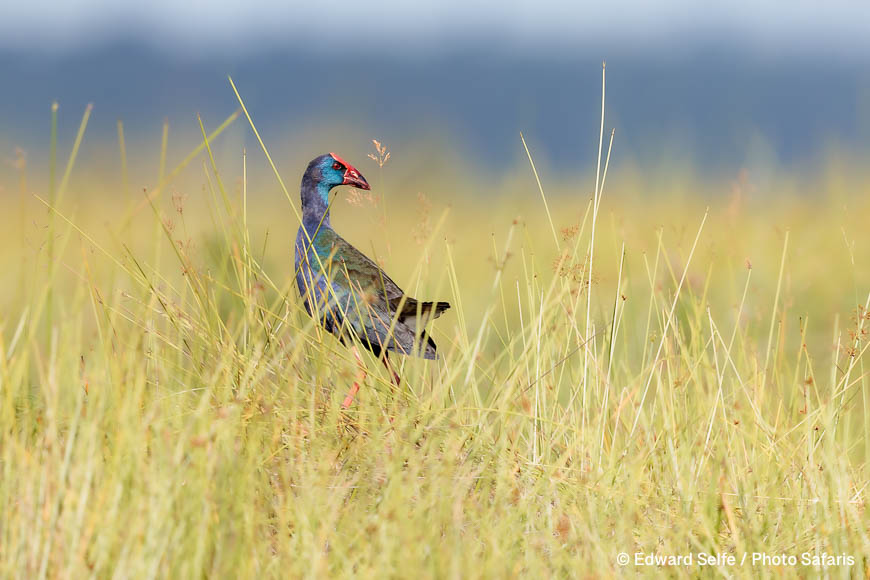
An African Swamphen momentarily stood on top of the reeds before diving for cover back into the undergrowth.
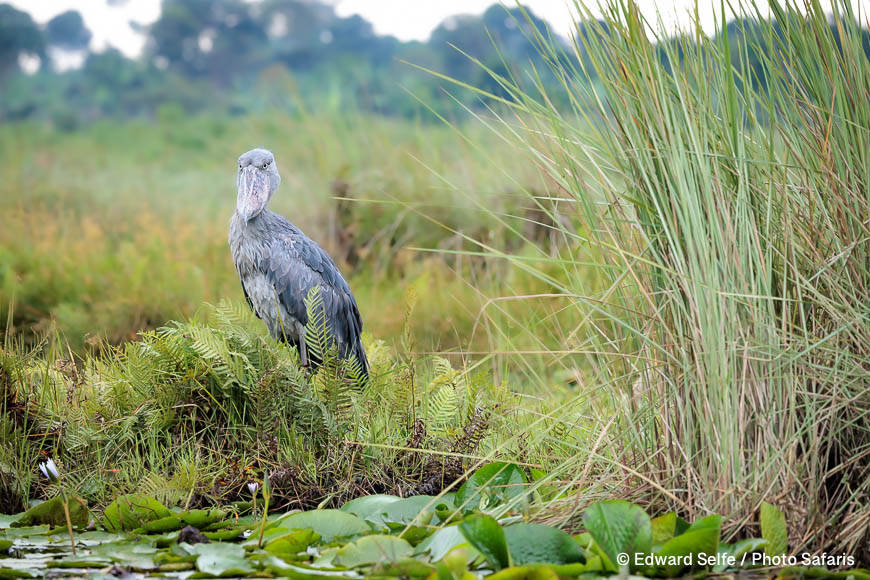
It’s hard to prepare for your first sighting of a Shoebill; they are so much more than the books and photos prepare you for….they are dignified and majestic….and really very tall!!
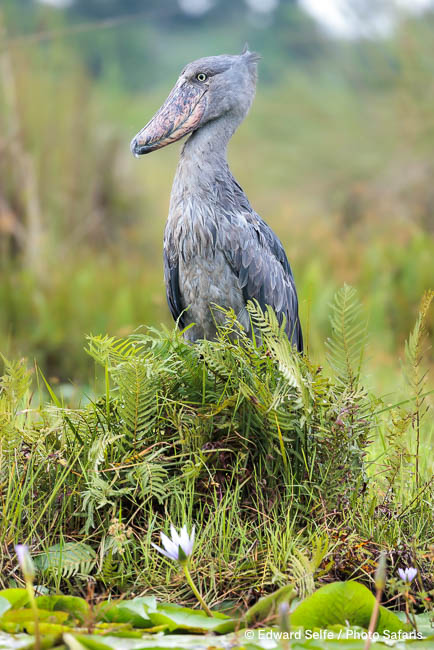
The sharp, hooked bill is used for killing the catfish that form the majority of their prey…
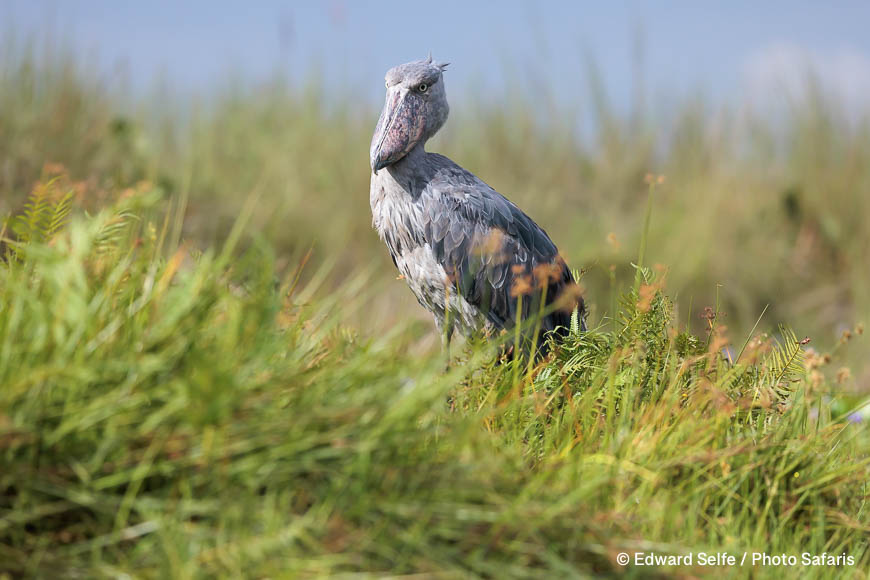
…and between feeding sessions, they do a lot of standing around!
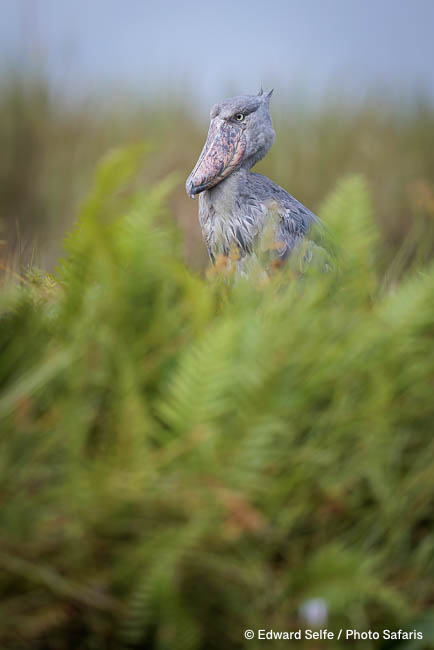
We were fortunate that this bird was very habituated and we could shift our position to take a range of photos.
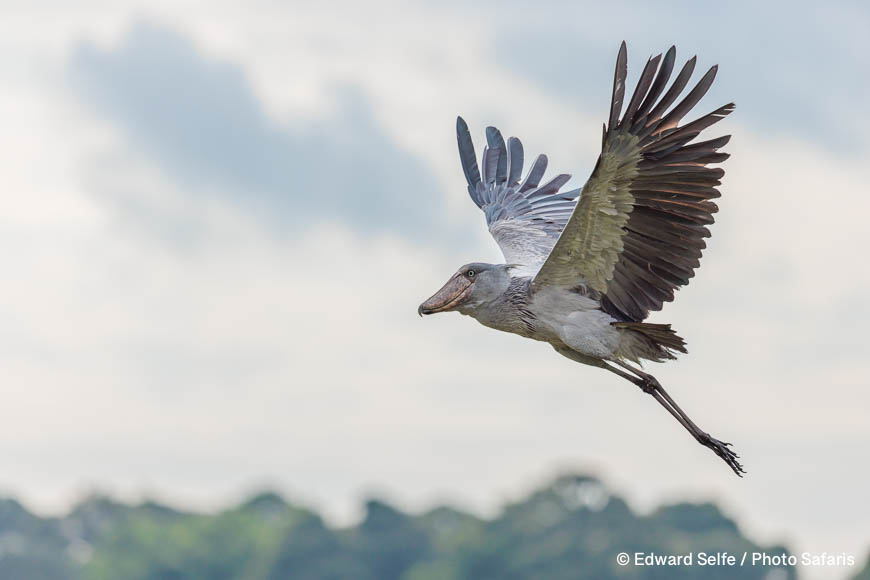
His neighbour — yes there were two in one spot! — was less relaxed and took flight with heavy, loud wingbeats soon after we arrived.
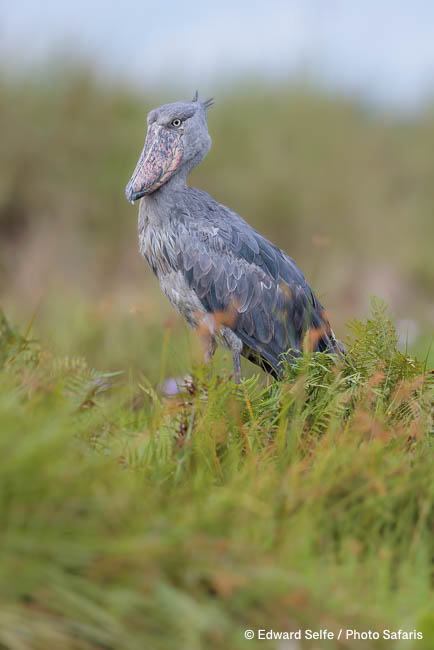
Their numbers are limited, and indeed threatened, by overfishing and by habitat loss of the papyrus swamps which they rely upon.
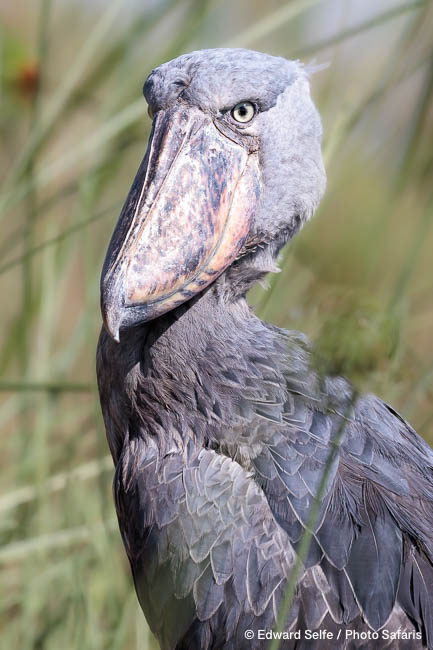
We were fortunate to be guided by Maria who was assisting the monitoring team in Mbamba Swamps. She knew the location of an active nest site and was willing to give us 15 minutes (the max permitted) at the nest site to watch the adult and chick together.
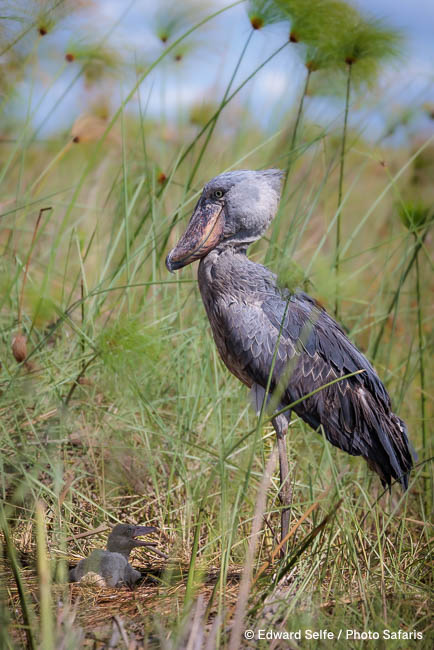
The male – presumably the female was away feeding – stood over the chick to shade it from the morning sunshine which was hot even at this early time. To share a sighting like this was a huge privilege and when the 15 minutes was up (it felt like 2 minutes!) we left grudgingly but fully understanding the need to leave them in peace.
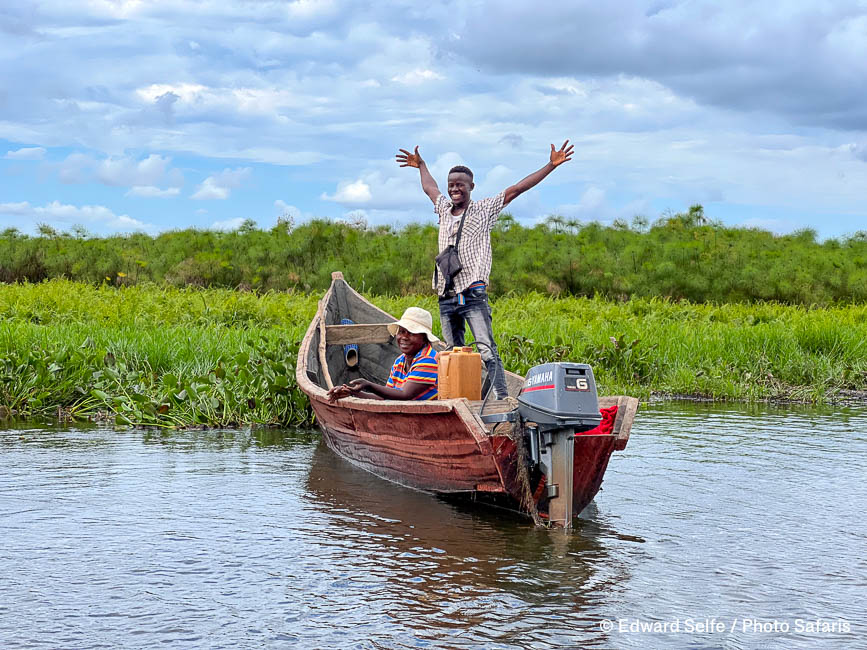
What a way to end our trip! we said goodbye to Maria and Ambrose and headed back across the bay mostly in silence as we absorbed what we had seen, not just in the last hour, but the preceding 10 days too.
It was a spectacular tour of a diverse and welcoming country. During 10 days, we had trekked with chimps and gorillas, explored the grasslands or Ishasha, boated on the Kazinga Channel and seen so many beautiful species of birds. In our forest walks, we had seen 5 species of monkeys and watched birds feeding their chicks, sheltering from the rain and searching for food. And, on our last day, we had explored a vast network of papyrus swamps which is home to one of Africa’s icons, the giant Shoebill stork. The images in this report are testament to the opportunities available for photographers and, when the conditions aren’t right for photos, it’s rewarding to sit back and observe the lush, rich nature of the place. It’s hard to think of a country where so much is possible in such a short time. It was extremely memorable. Thank you for reading all the way to the end; please read on to find out about June & July 2024’s Tour of Uganda and Kenya.
Details of Uganda & Kenya Photographic Tour – June & July 2024
This 3-week Photo Safari enjoys an extended time in both Uganda & Kenya. With 2 weeks in Uganda we will have ample time to experience and photograph the wildlife and scenery of that diverse country; we will trek with chimps, stay overnight above one of the most scenic crater lakes, explore Ishasha (the country’s premier savannah habitat) and culminate with gorilla trekking and a expedition to search for the stately and unique Shoebill. Throughout the focus will be on maximising the wildlife viewing and photographic opportunities, and I will be on hand — right by your side — to assist with camera settings, finding the best angles and predicting the upcoming photo opportunities.
Having recently travelled for 2 weeks through the areas which are covered by this tour, I have considerable current knowledge that ensures we will best allocate our time to gaining the best experience. I know how to work with the Ugandan guides to convert a classic safari into a photographic one and what to expect in each area.
Following 2 weeks in Uganda, we will continue with a week’s safari in Kenya, staying with Laikipia at their Meru Mobile Camp and their base camp Laikipia Wilderness. We start with 3 nights at Meru which will be superb for rhino, lion, leopard and varied plains game with the scenic backdrop of mountains beyond. Laikipia Wilderness is famous for their habituated wild dogs and, more recently for their resident black leopard Giza. We hope to spend lots of time with both, as well as excellent plains game.
Inclusions:
- 1 night Karibu Guesthouse, Entebbe – FB
- Visit to Botanical Gardens and a sunset cruise on Lake Victoria
- 3 nights Turaco Tree Tops, Kibale NP – FB
- 1 chimp trek and 1 chimp habituation experience, 2 wetland walks, 1 night walk
- 1 night Ndali Lodge, Crater Lakes – FB
- Activities at Ndali Lodge
- Afternoon private cruise for our group on Kazinga Channel
- 1 night Mweya Safari Lodge
- 1 morning chimp trek at Kyambura Gorge
- 2 nights Ishasha Wilderness Camp – FB+drinks
- 4 game drives in Ishasha, Queen Elizabeth NP
- 4 nights Mutanda Lake Resort – FB
- 2 gorilla treks in Rushaga
- 1 golden monkey experience in Mgahinga NP
- Flight Kihihi or Kisoro to Entebbe with extra luggage allowance
- 1 night Karibu Guesthouse, Entebbe – FB
- 1 overnight Nairobi – B&B
- 3 nights Meru Mobile Camp – FB
- 4 nights Laikipia Wilderness Camp – FB
- 1 night Nairobi – B&B
- All road transfers between destinations & 1 flight as outlined above
- All National Park fees and trekking permits
- Private vehicle and guide throughout
- Private photo tuition and guiding with Edward Selfe
- Max group size 4 – 1 space available
Exclusions:
- All international flights into Entebbe, from Entebbe to Nairobi and out of Nairobi
- VISAs for Uganda and Kenya
- Drinks, except drinking water, at all camps except Ishasha Wilderness
- Tips
- Fund for extra optional activities along the route – suggested USD 200 pp
I very much hope you will join me! Please get in touch to find out more; all enquiries are welcome for this special bespoke trip.
